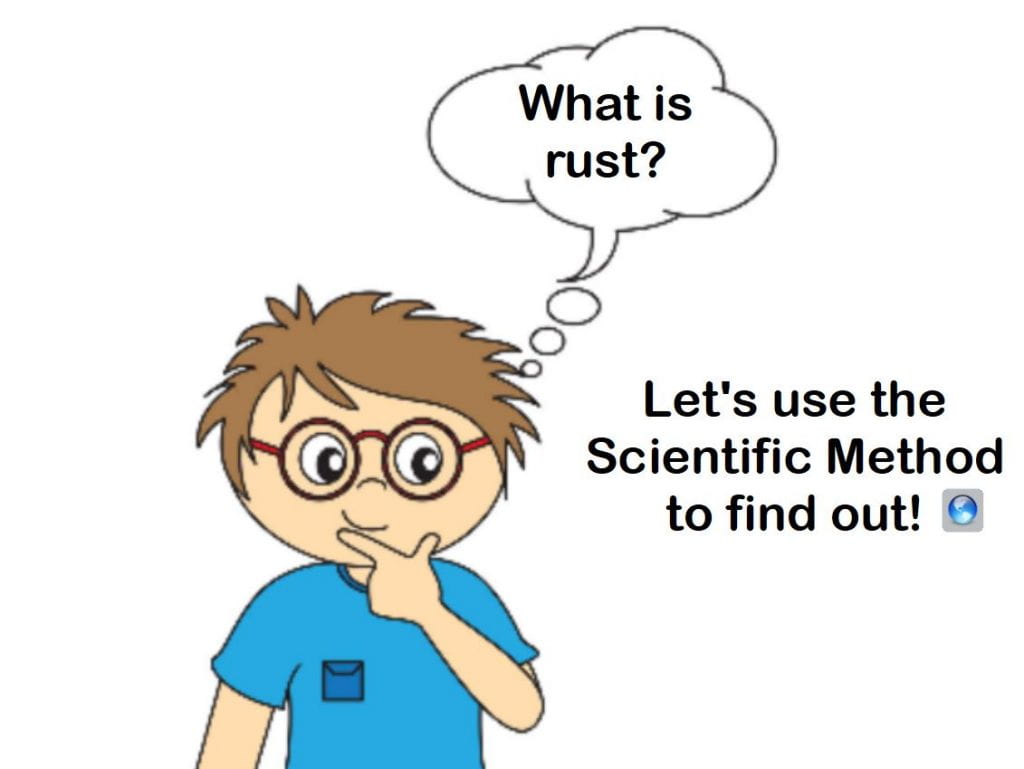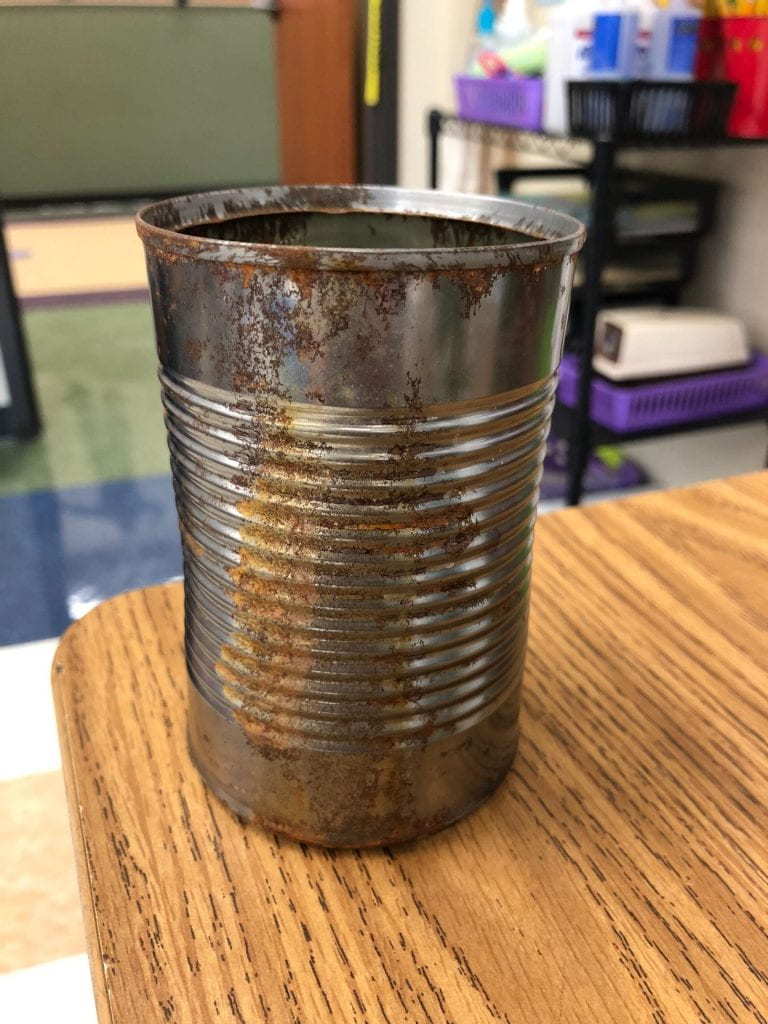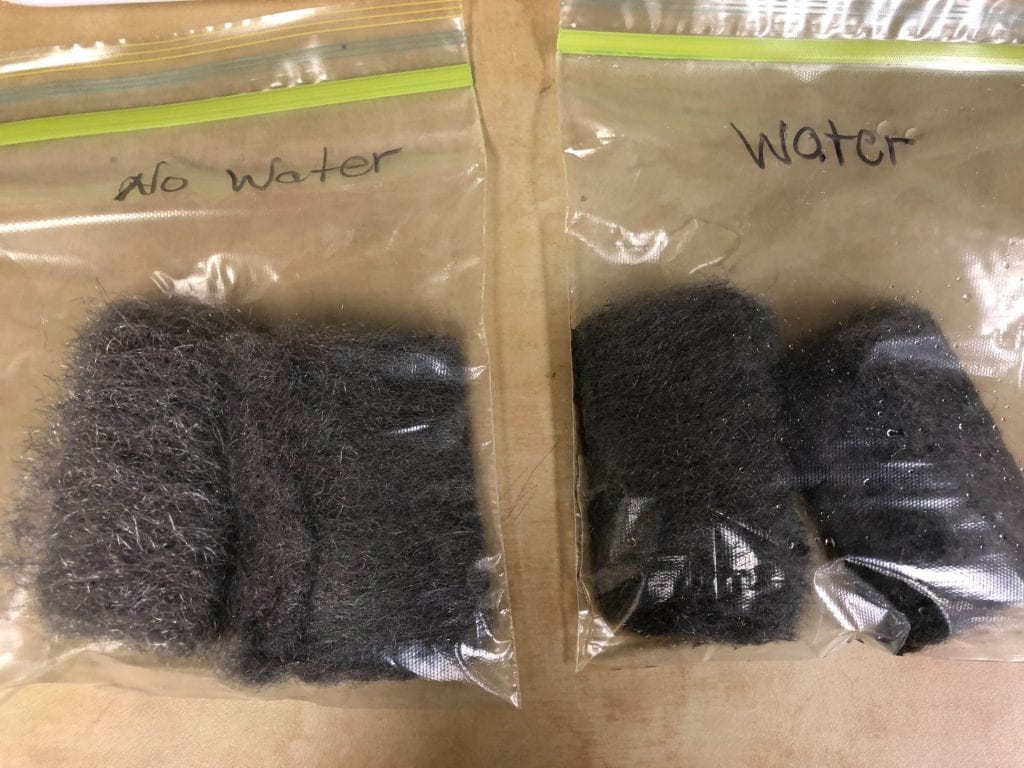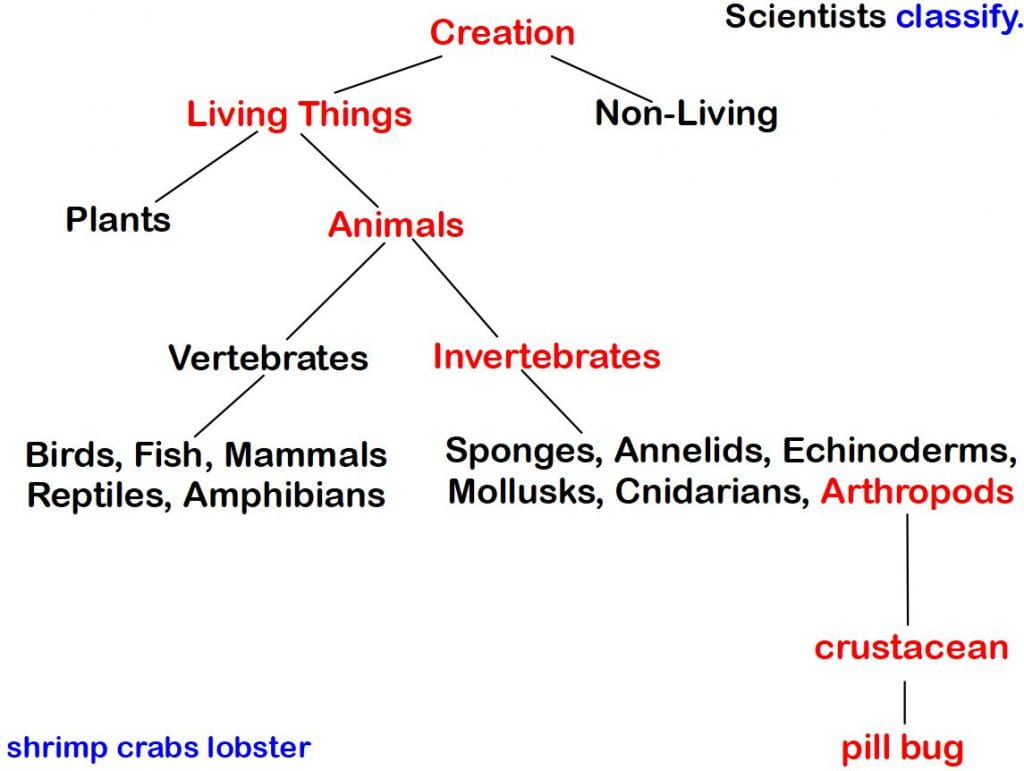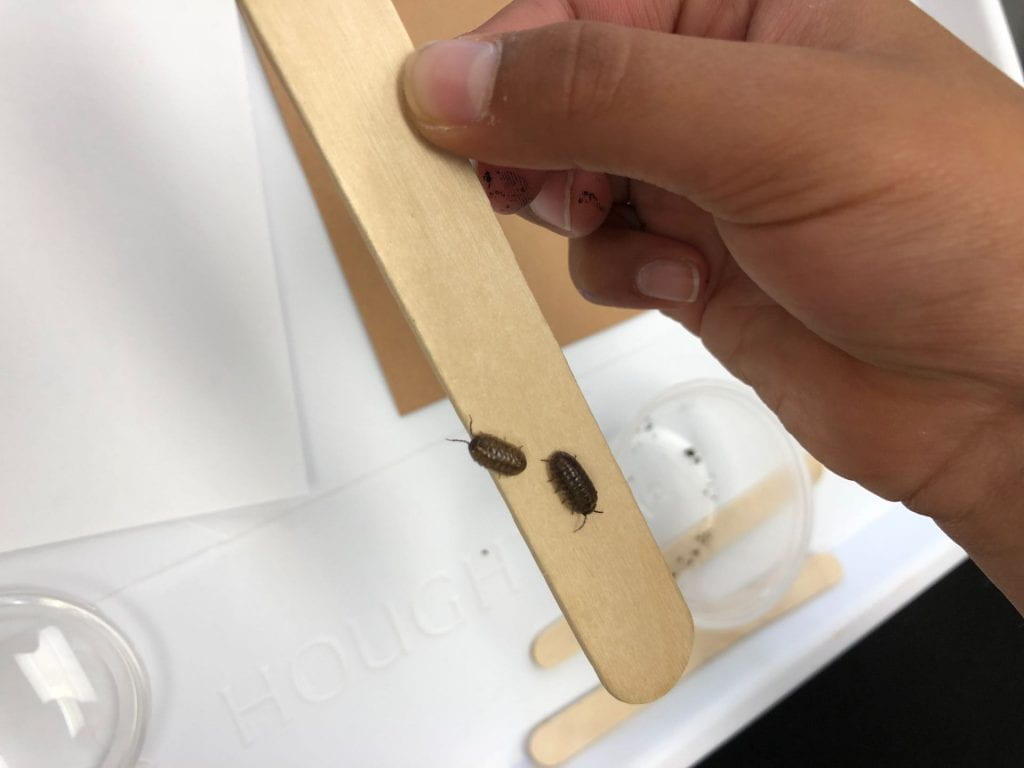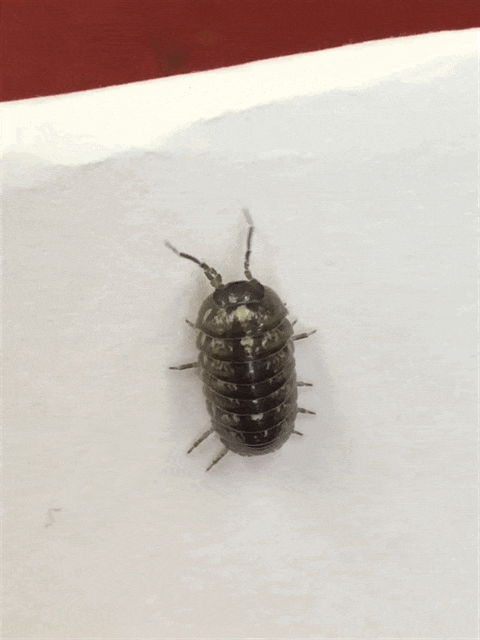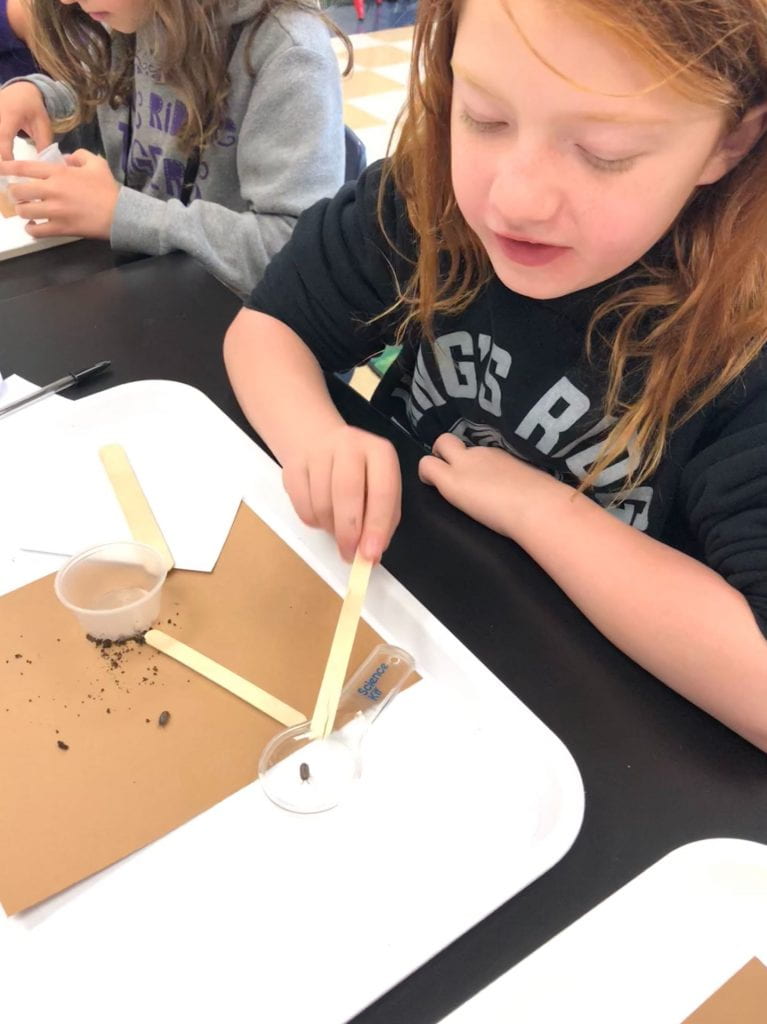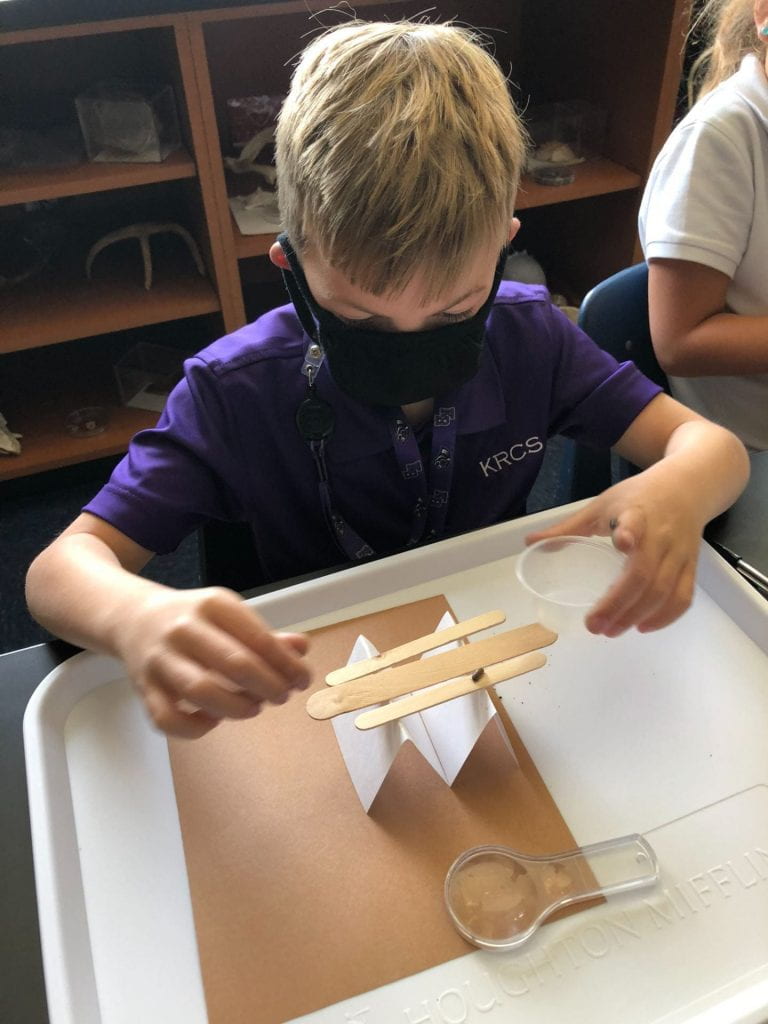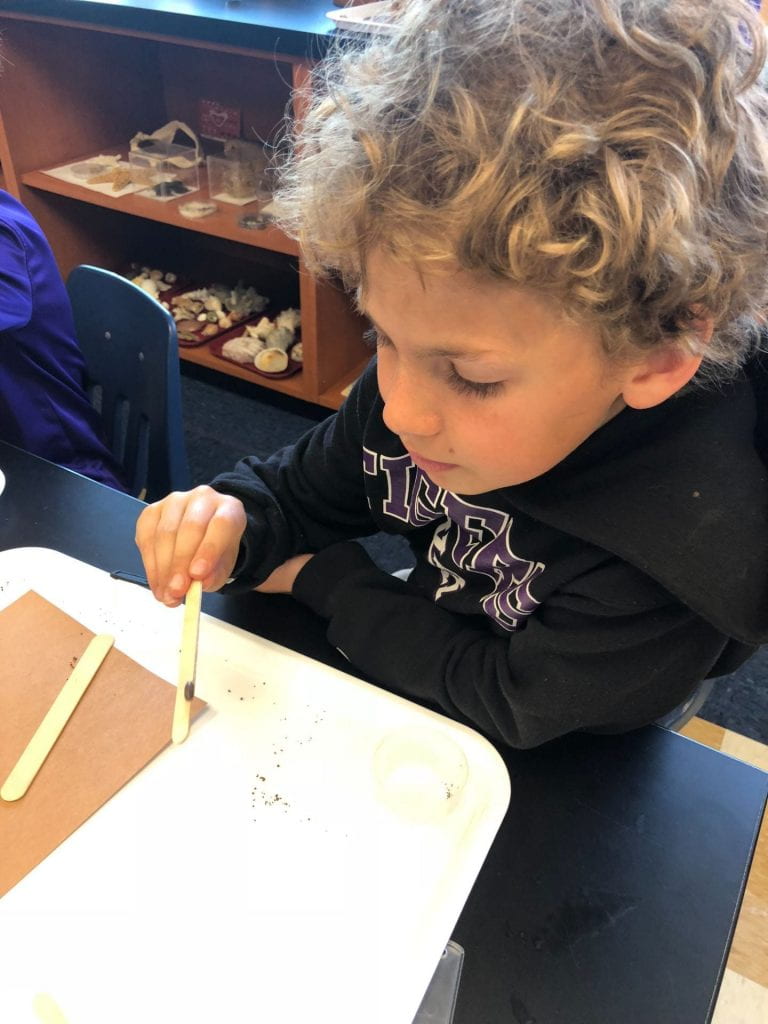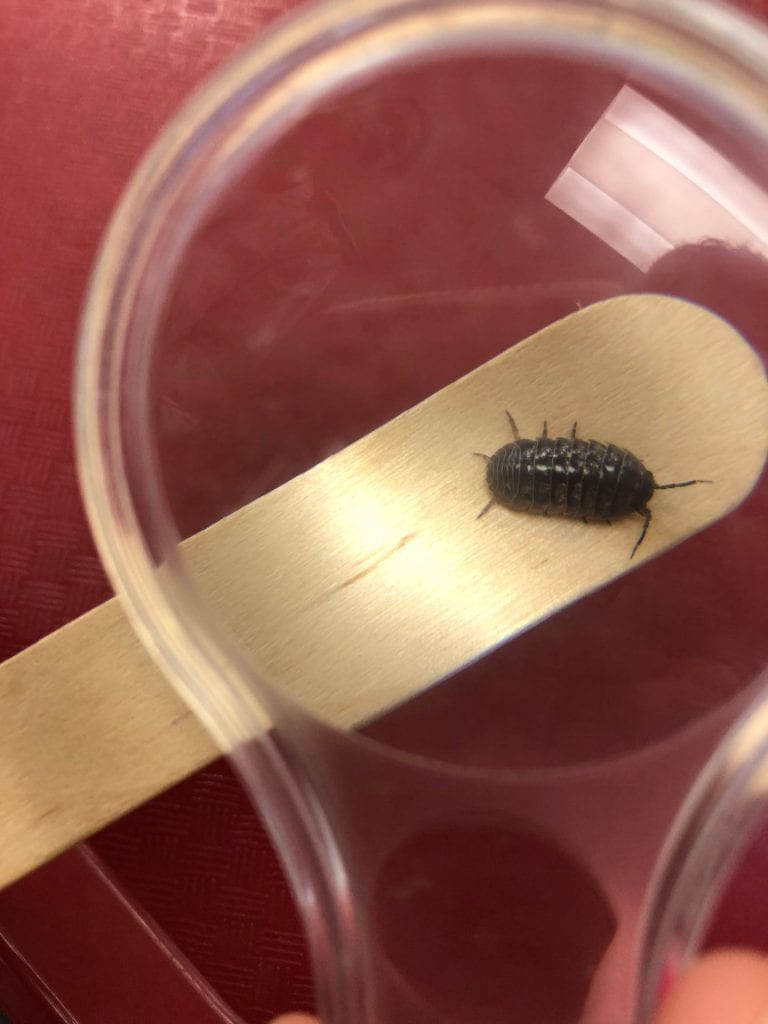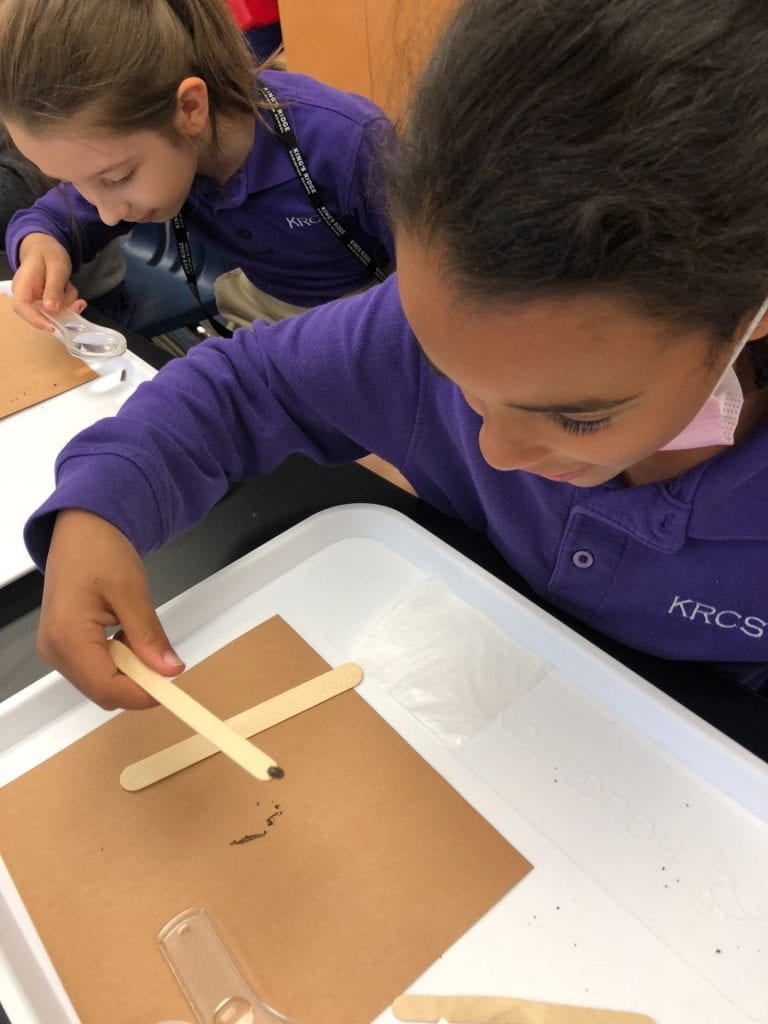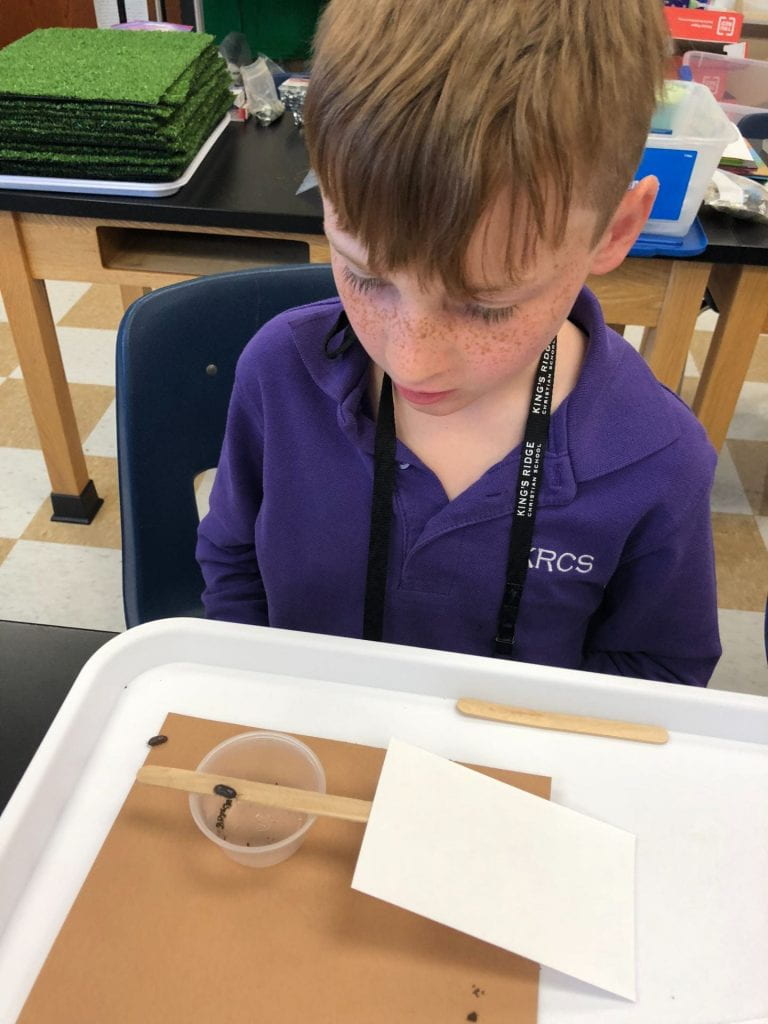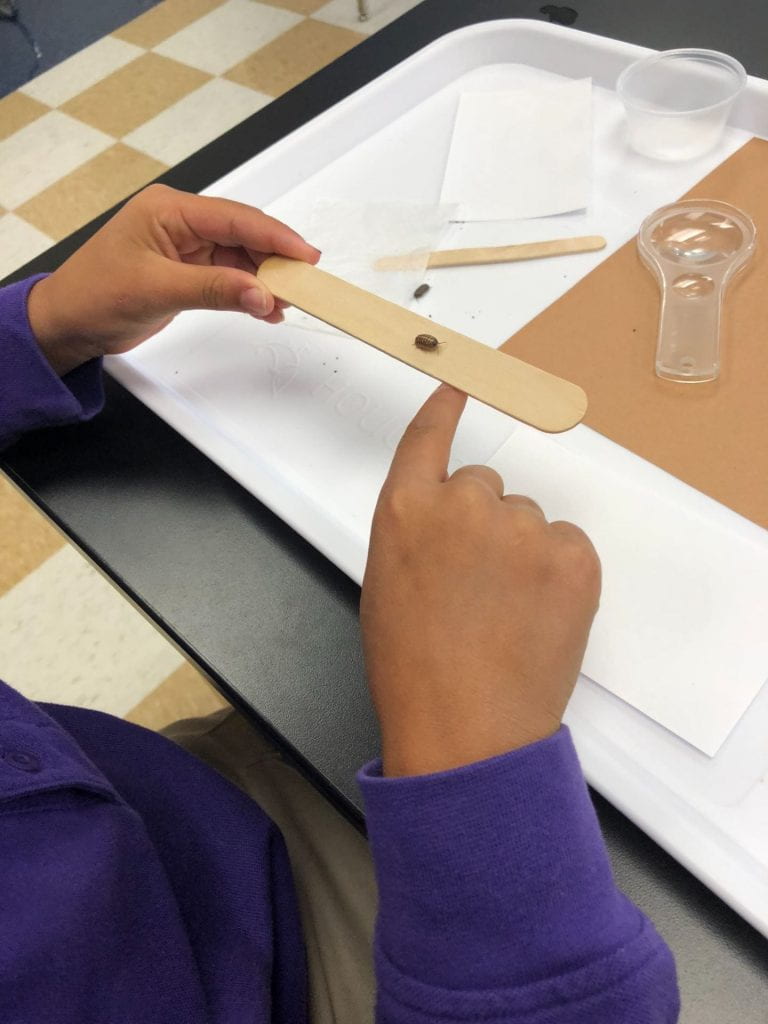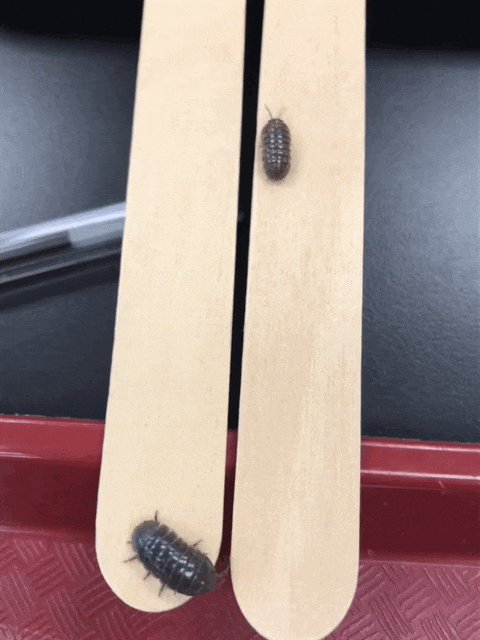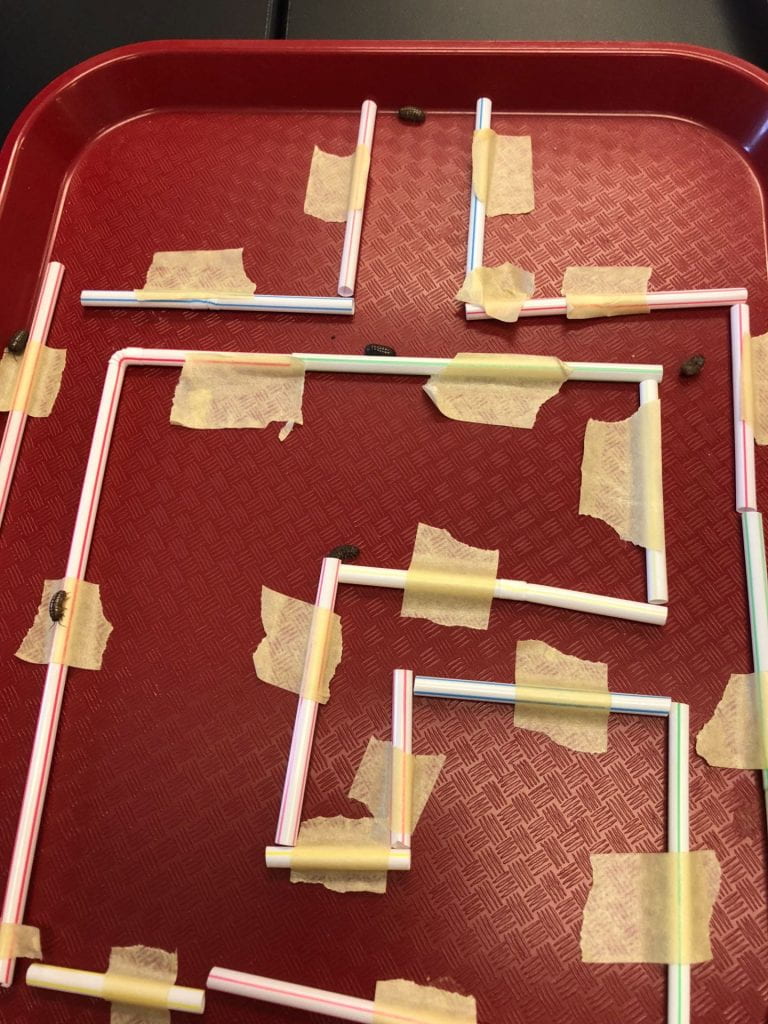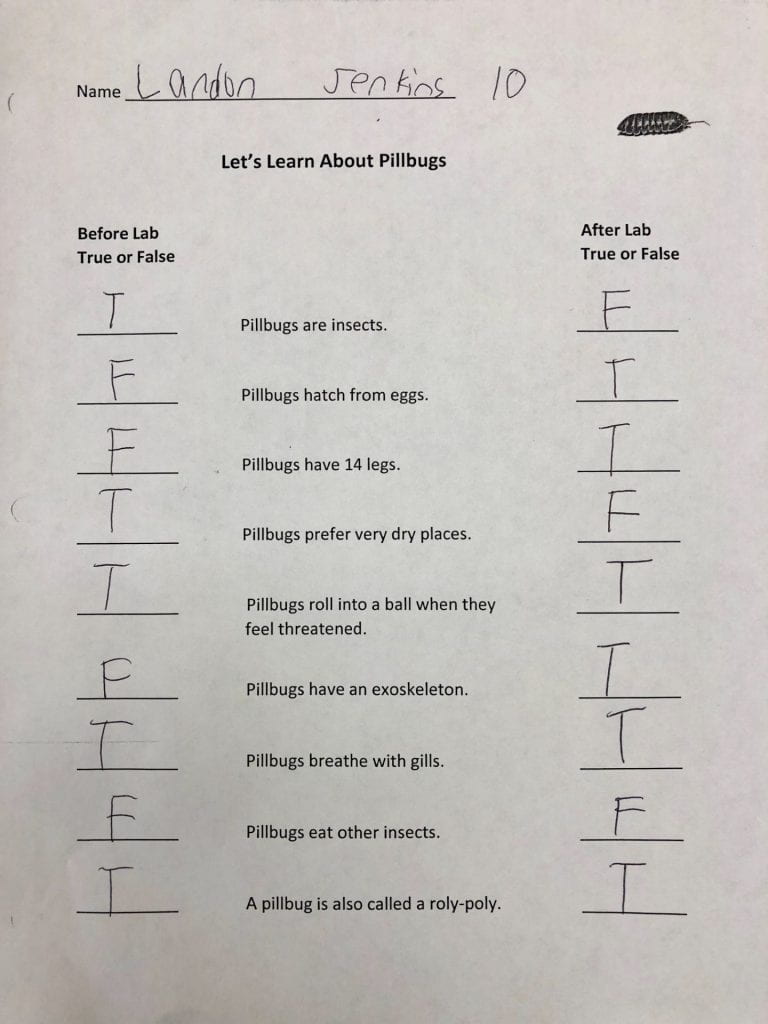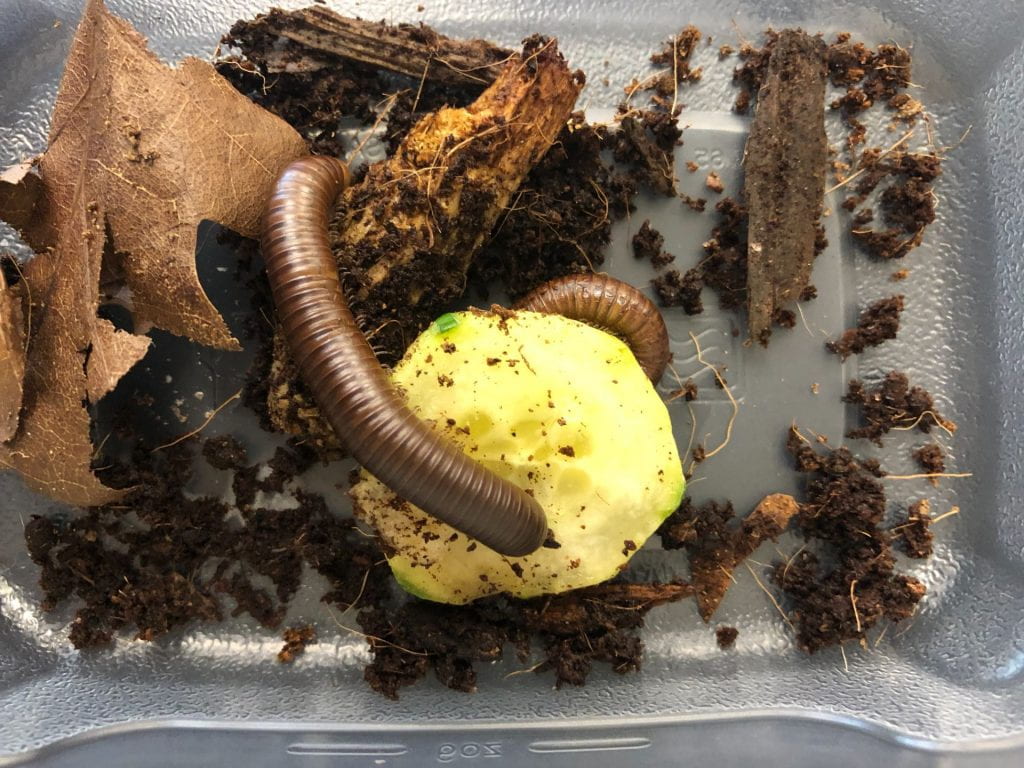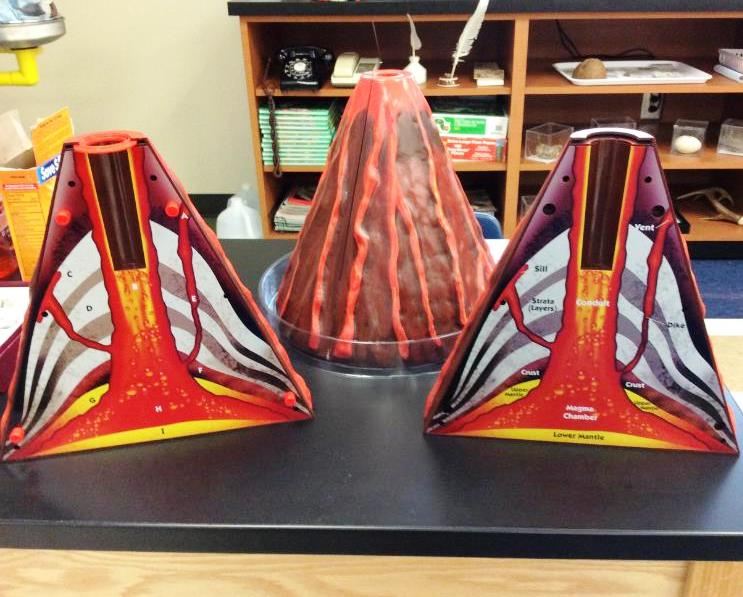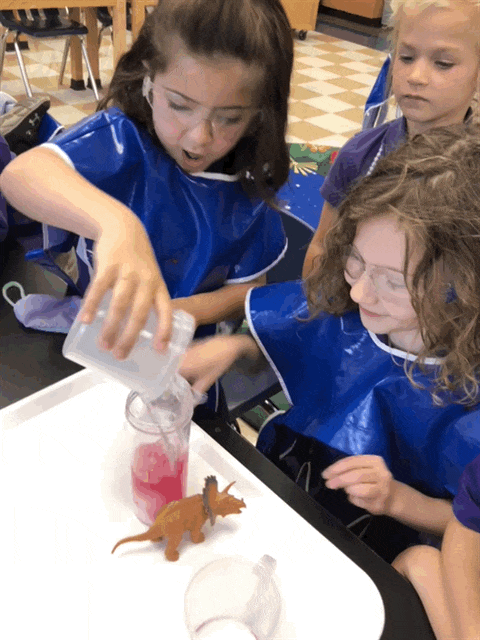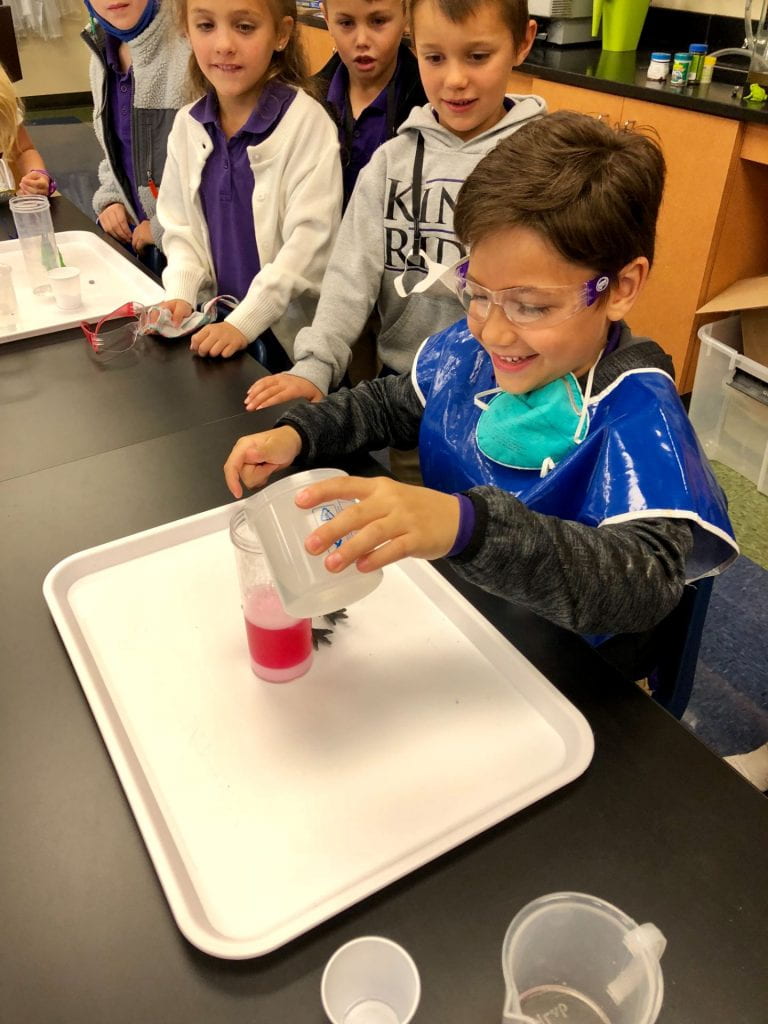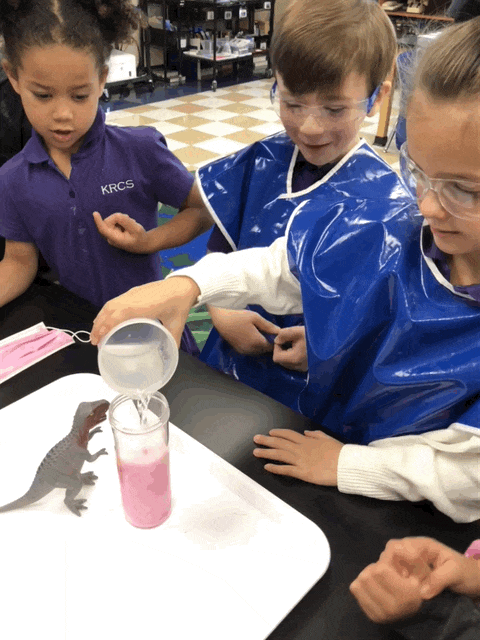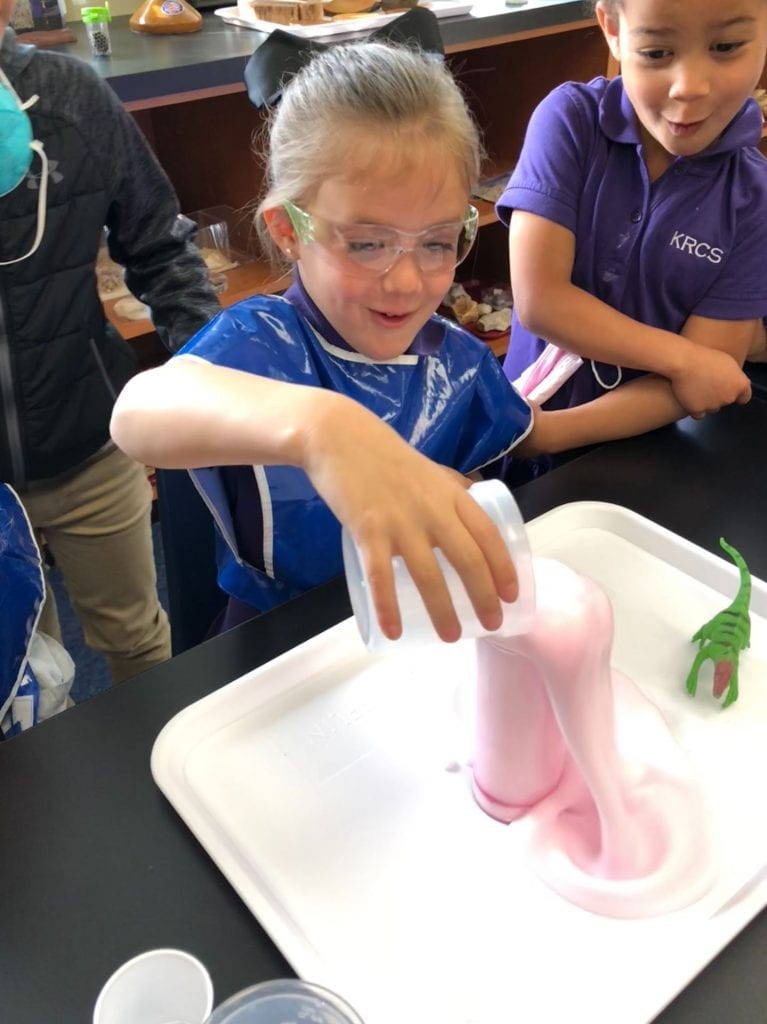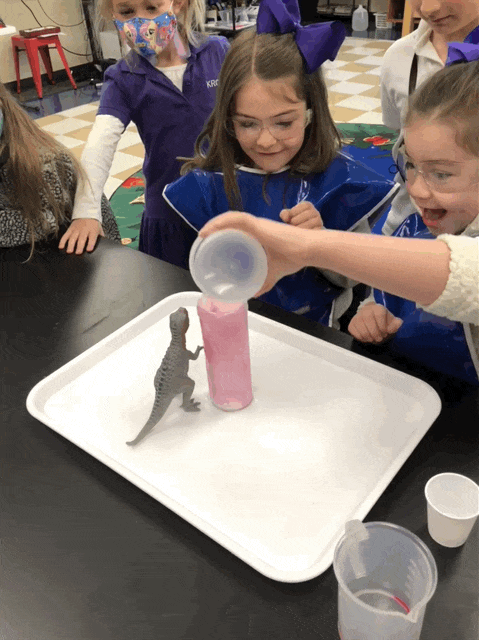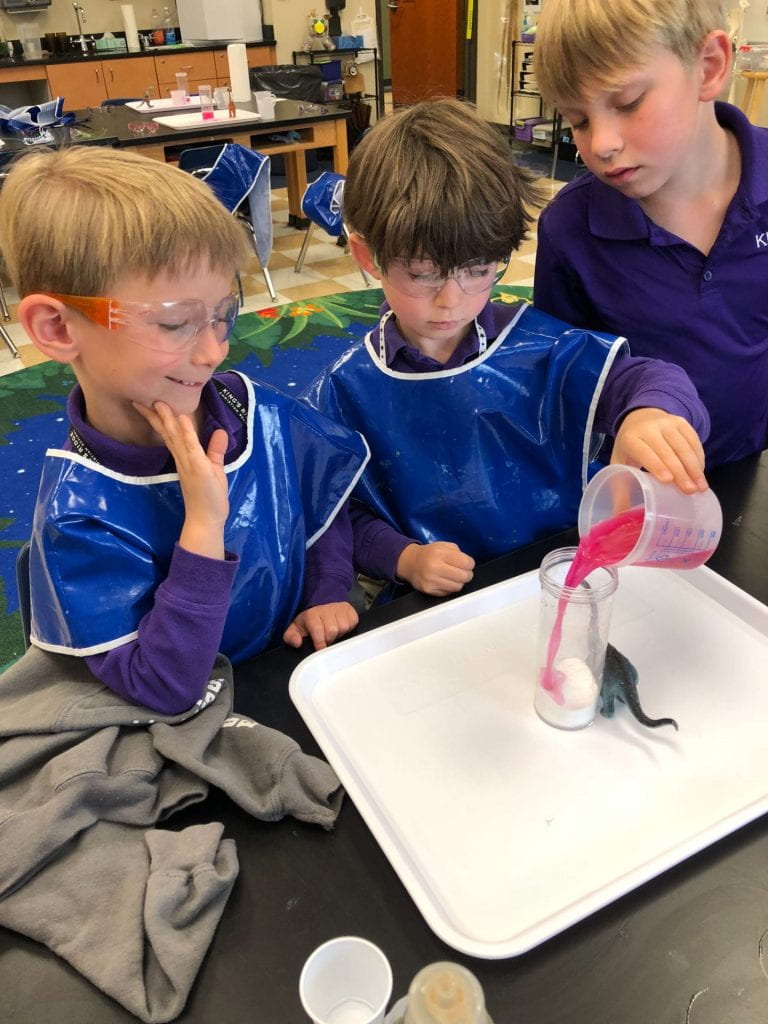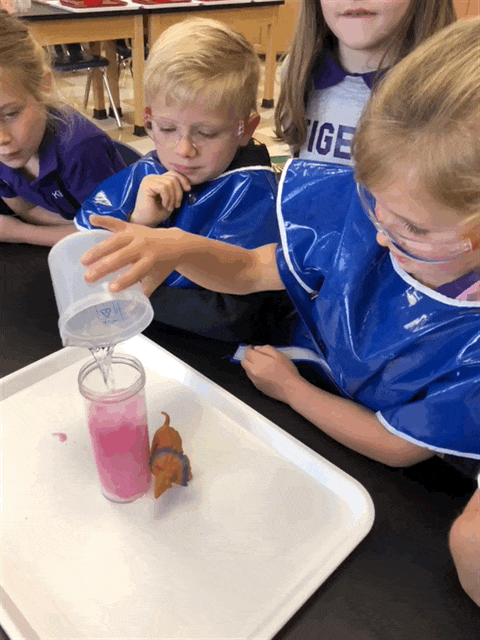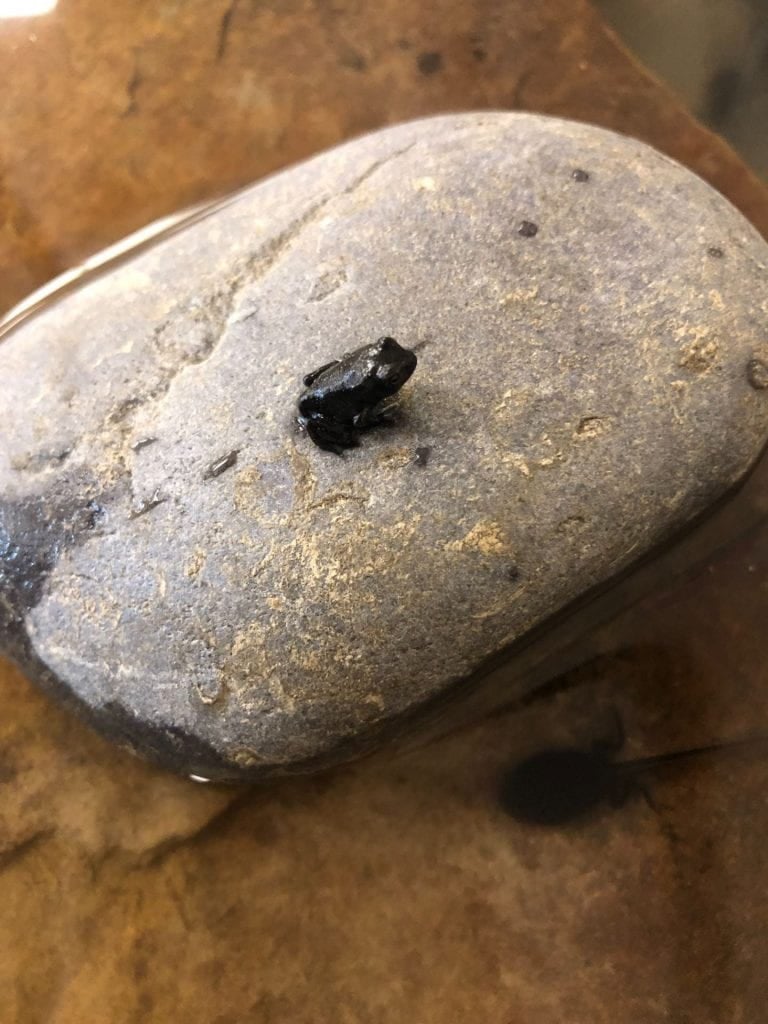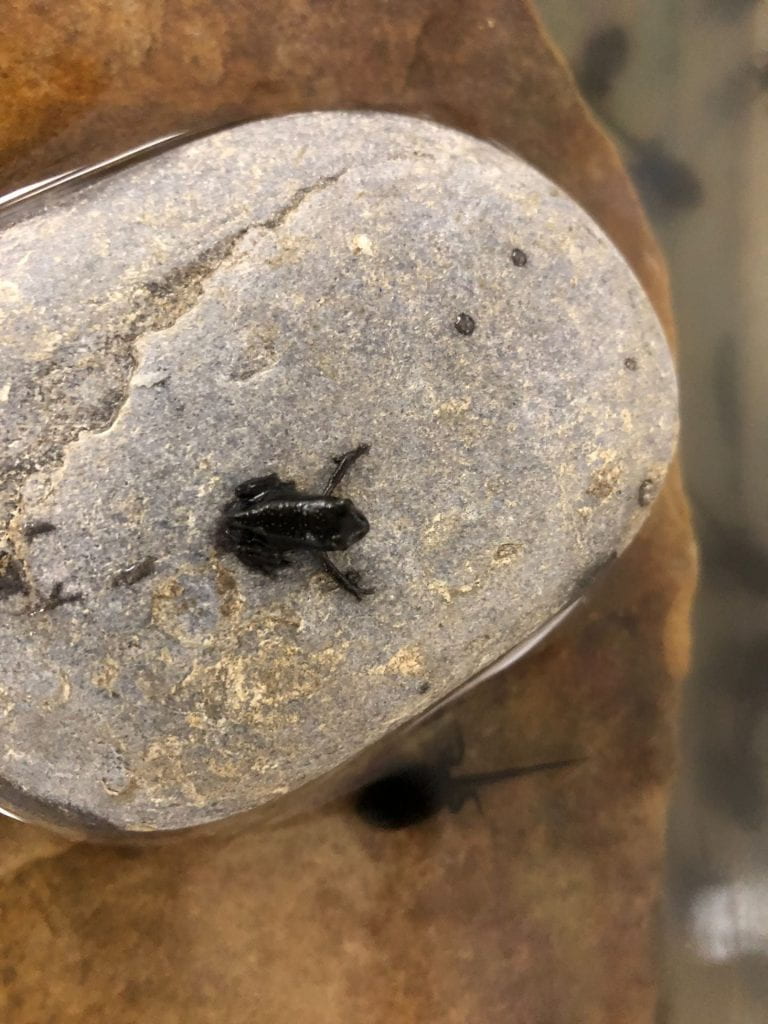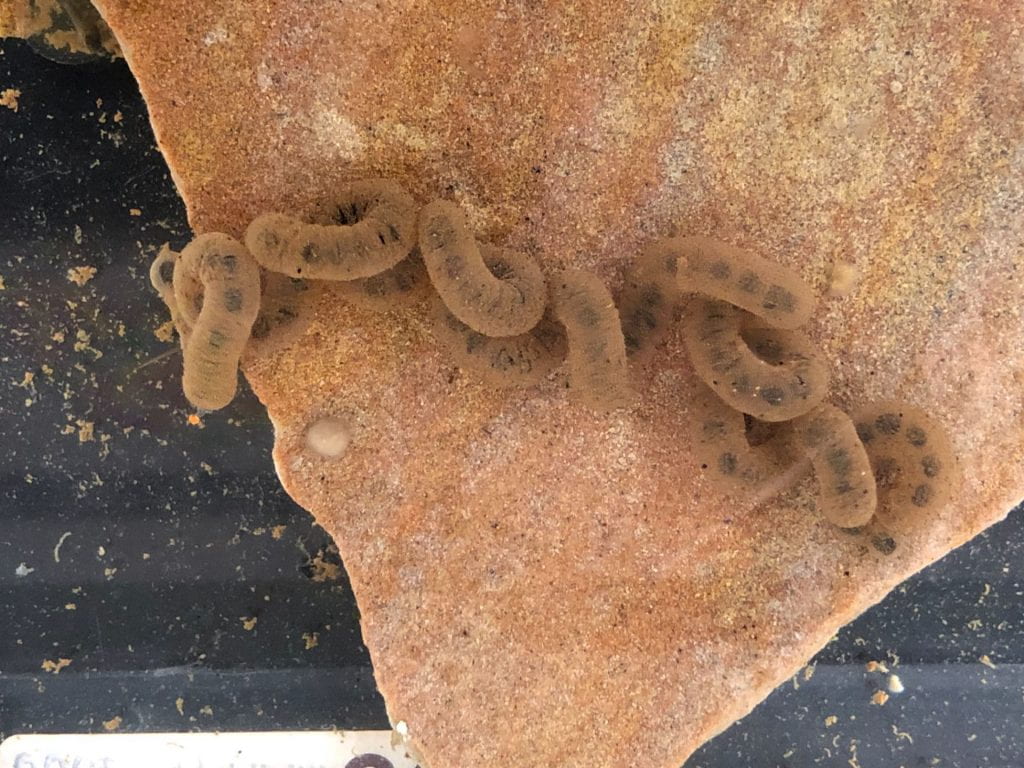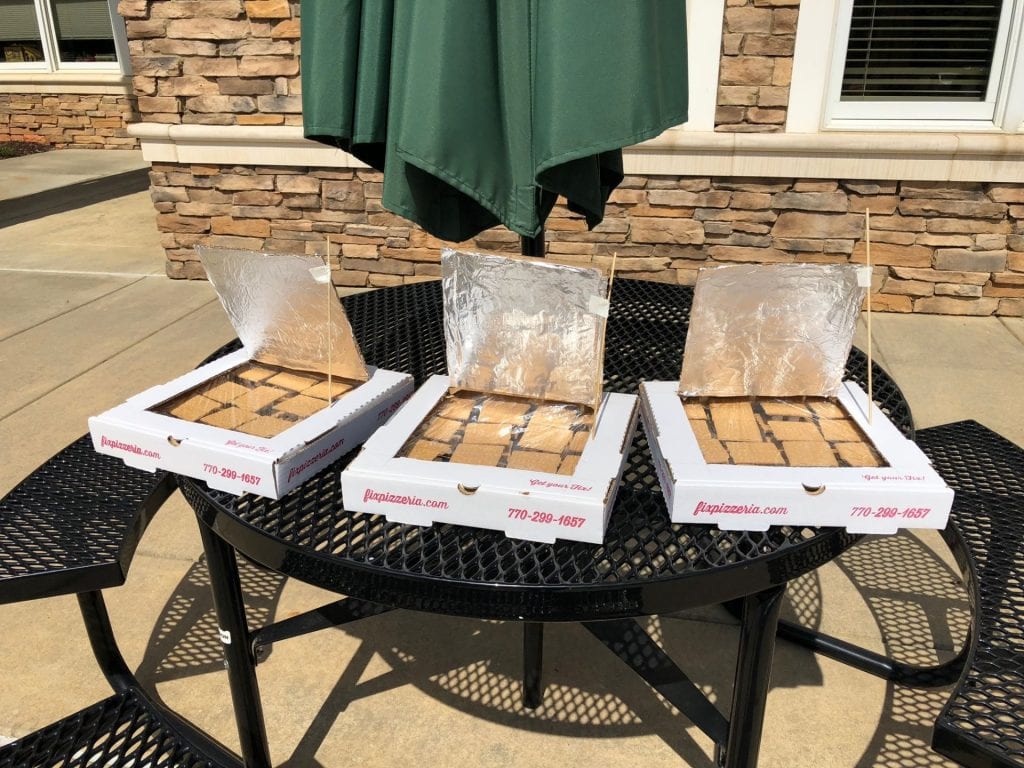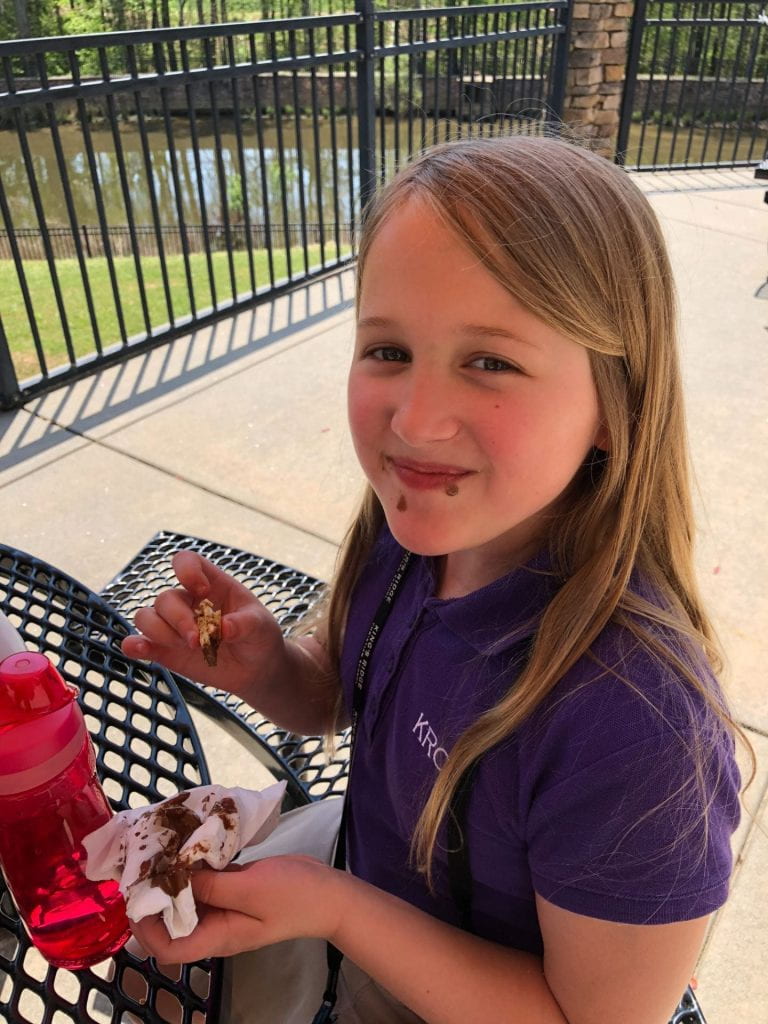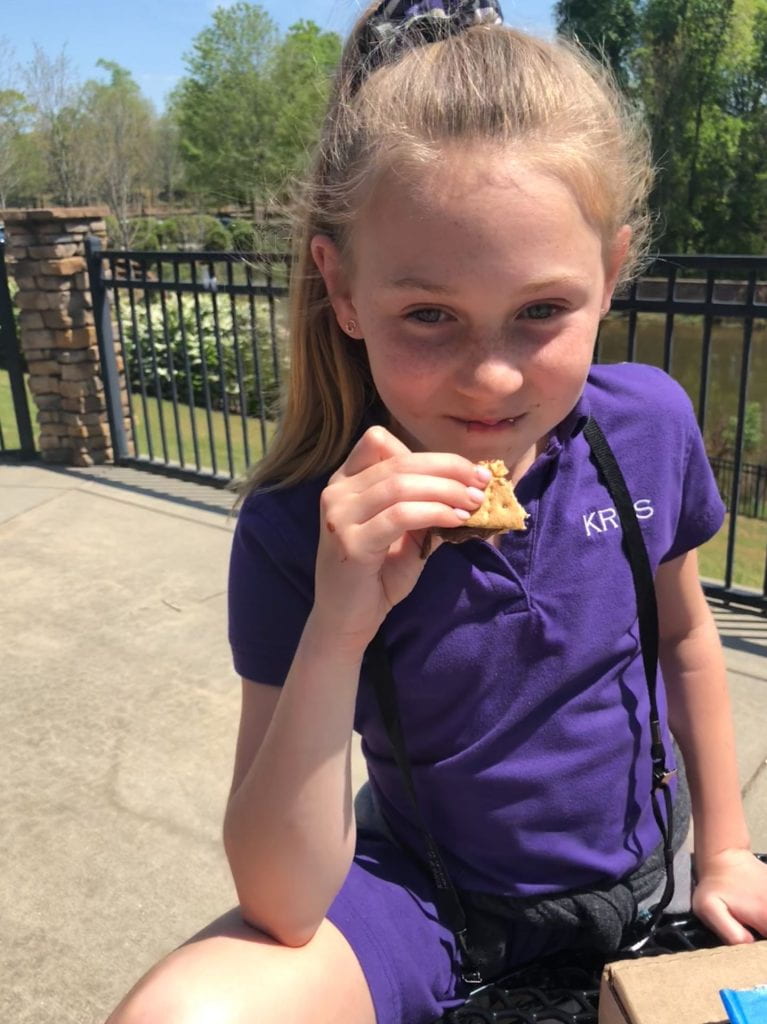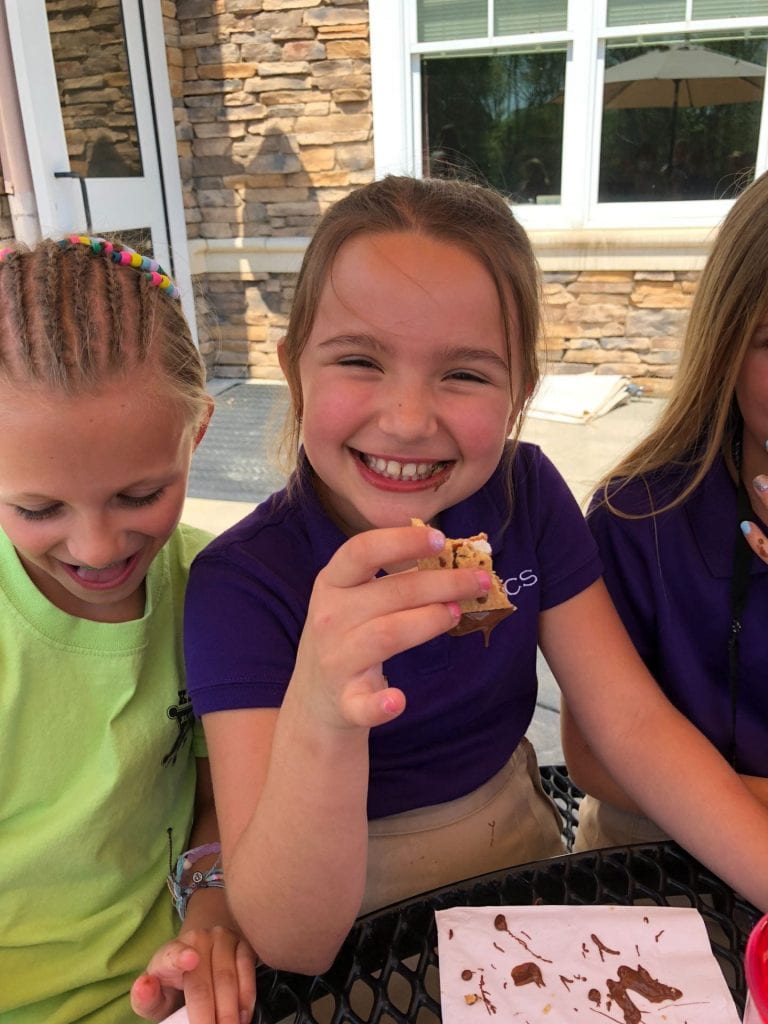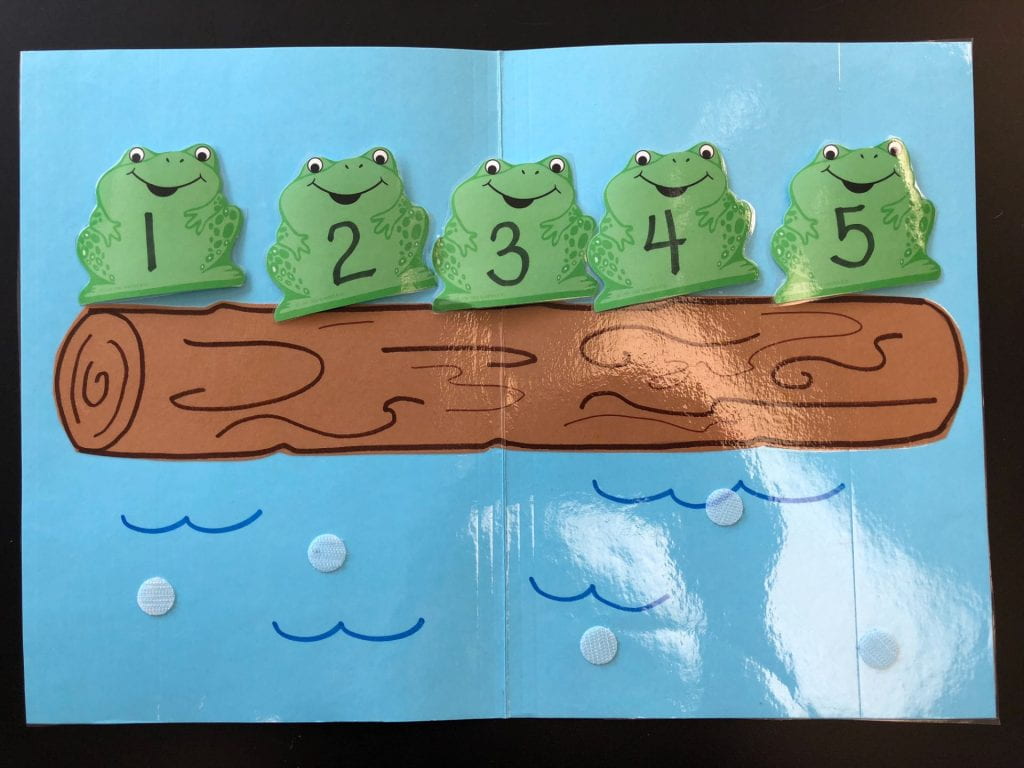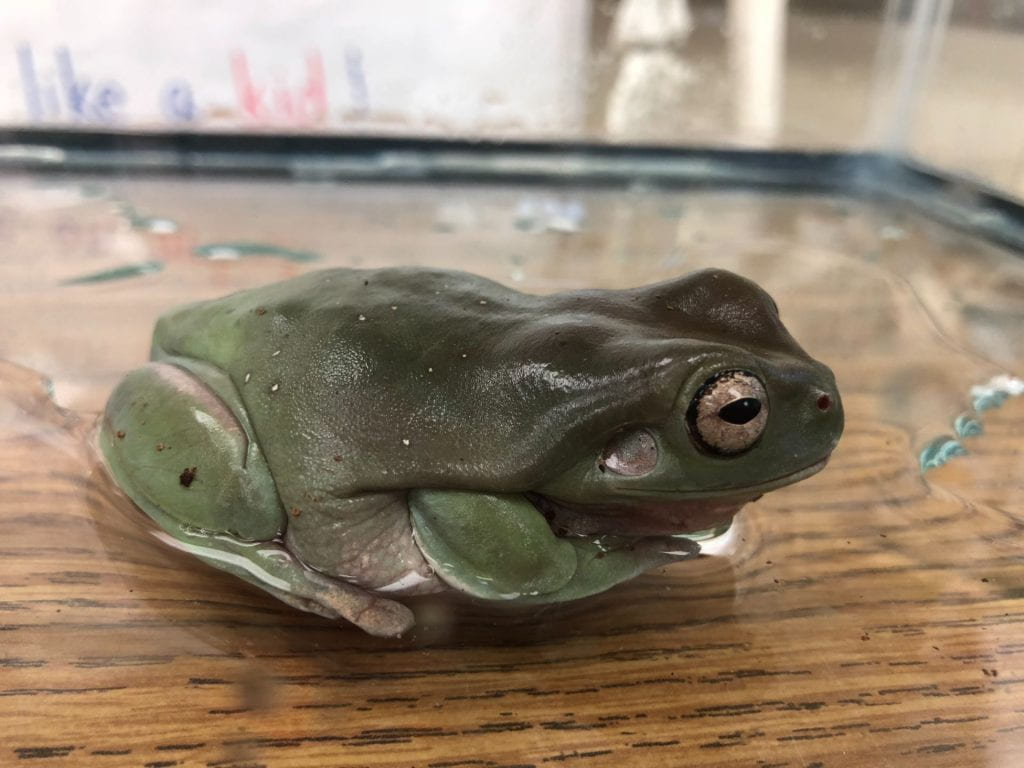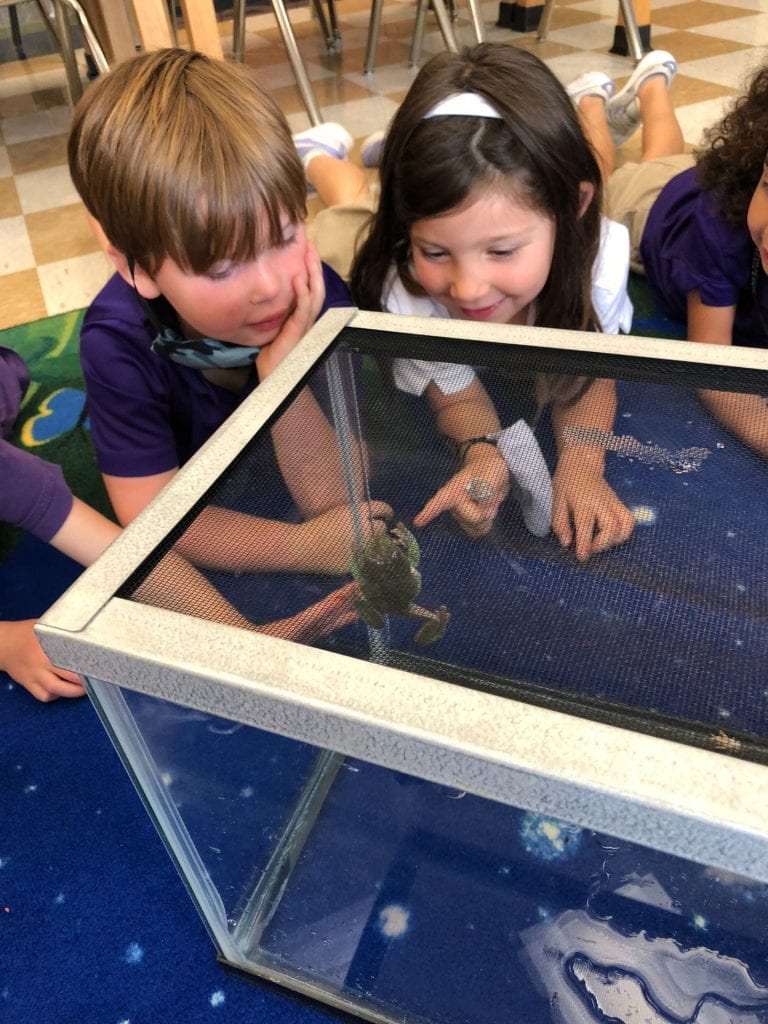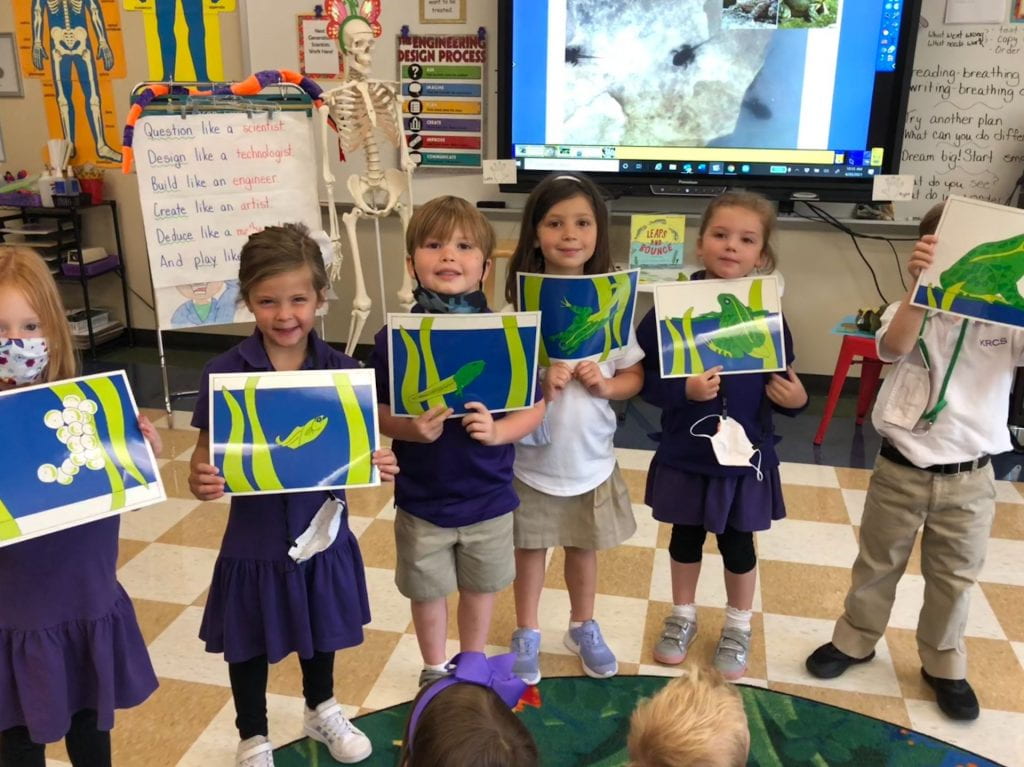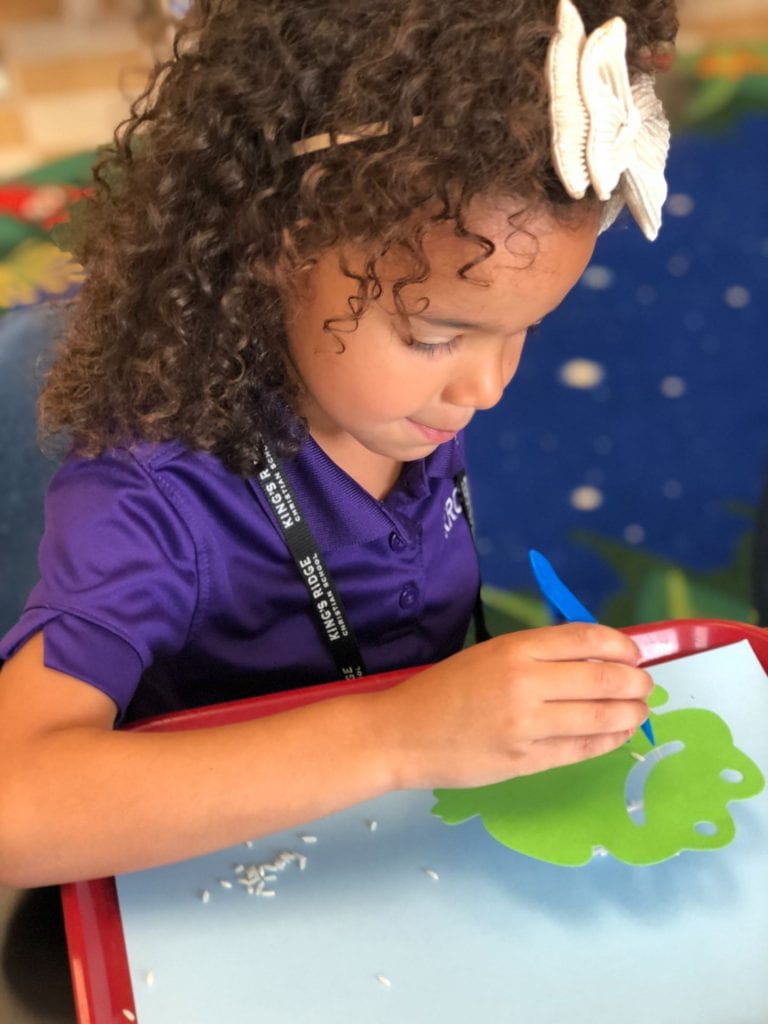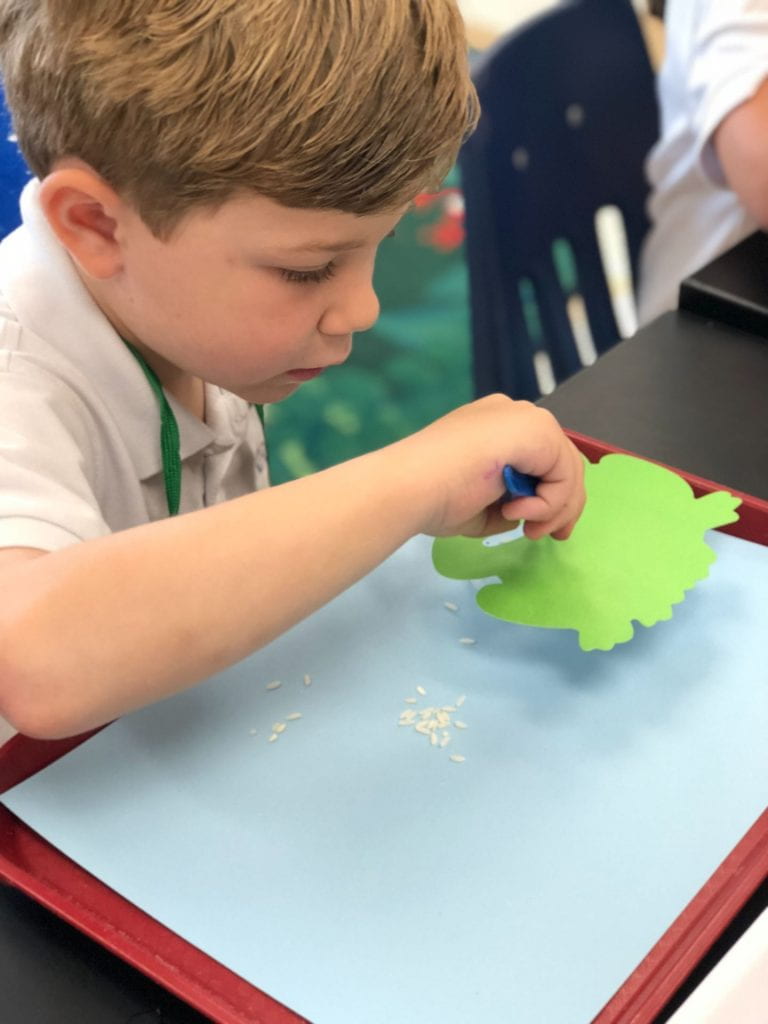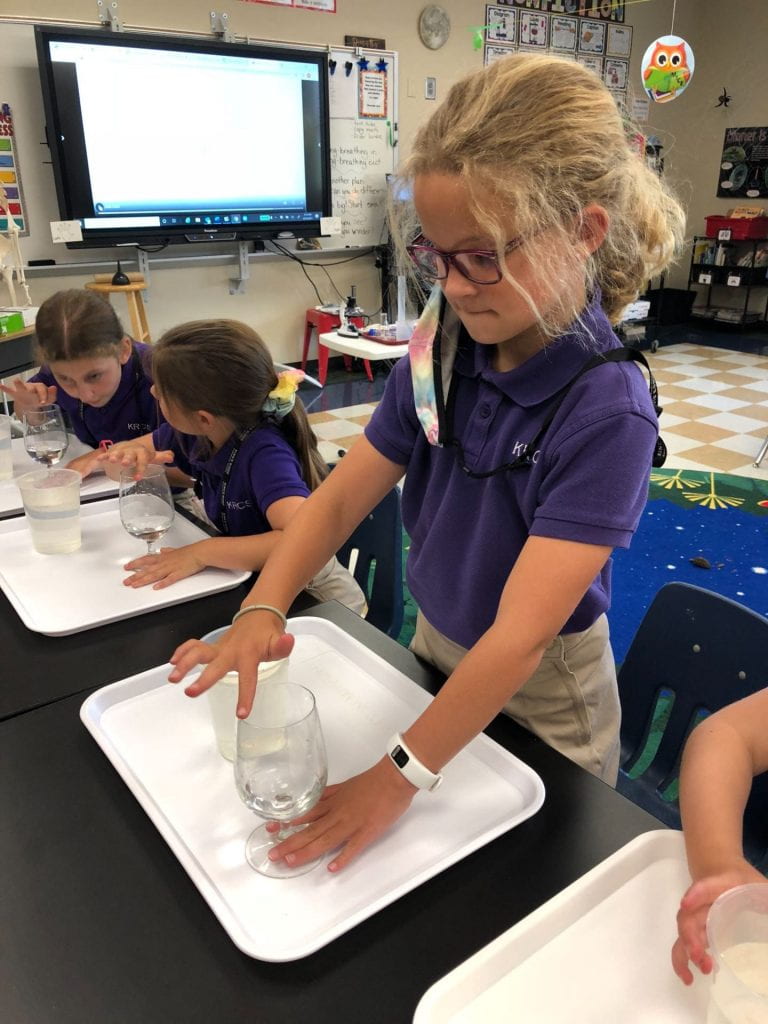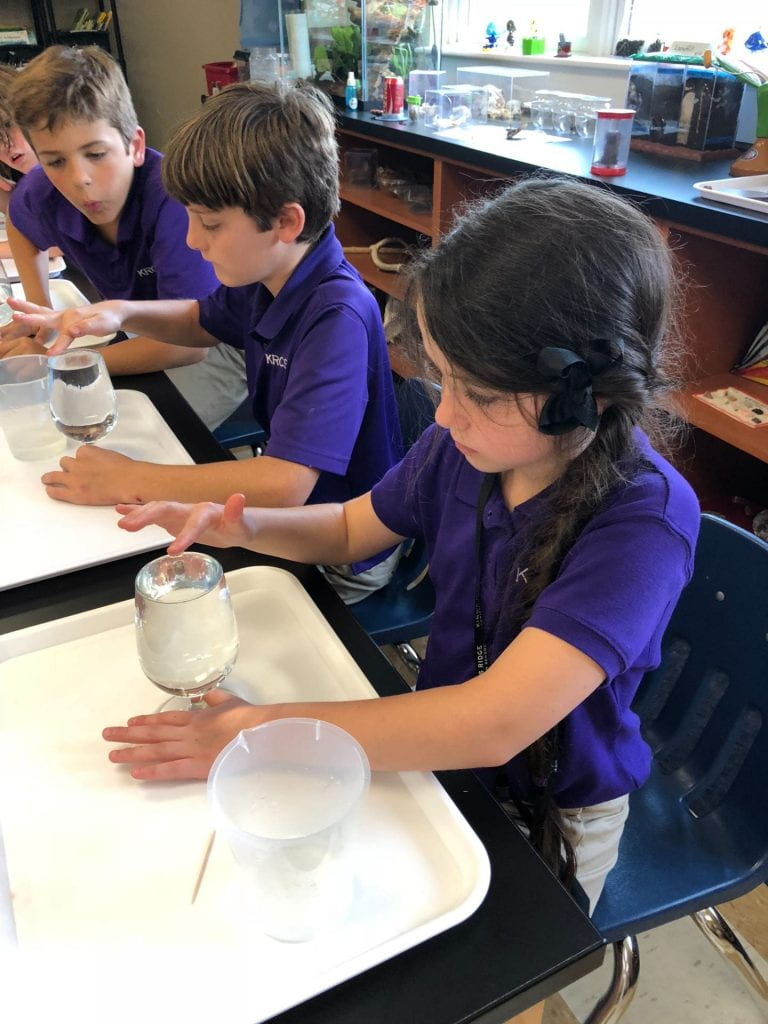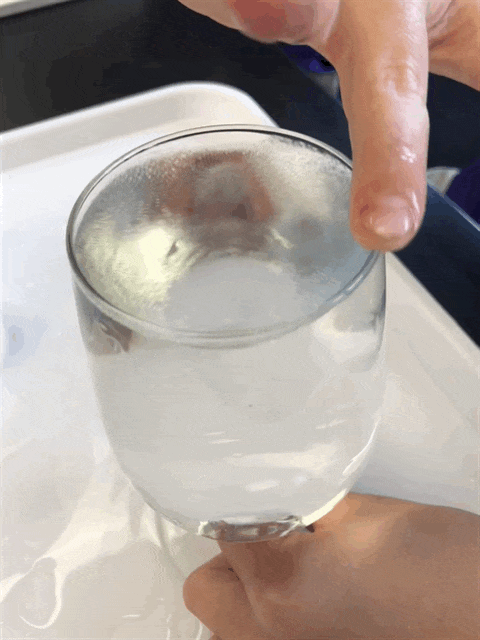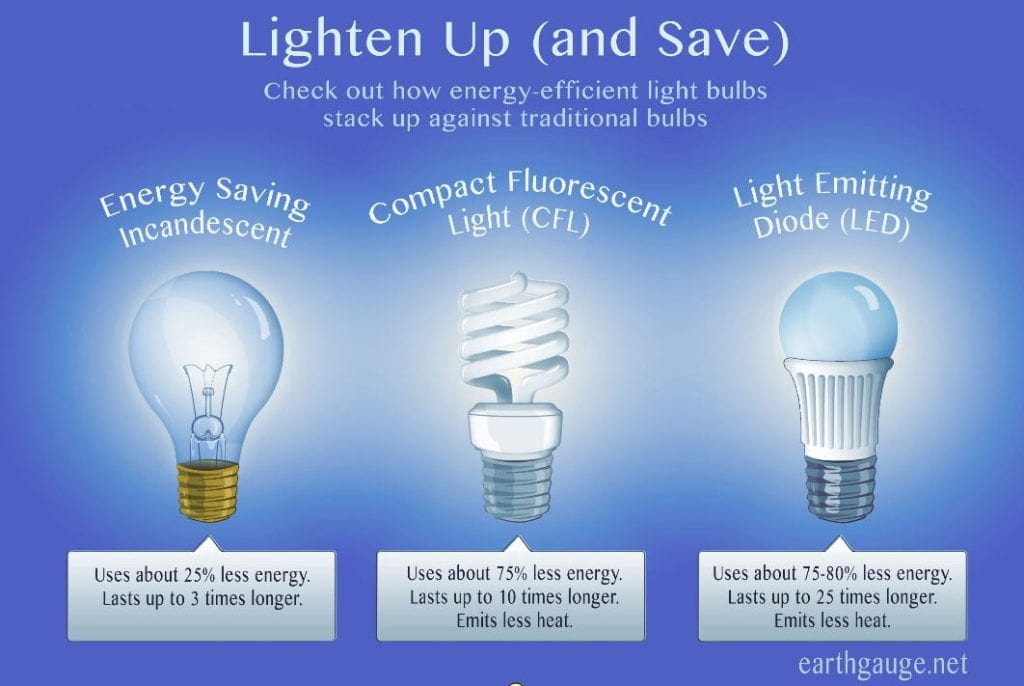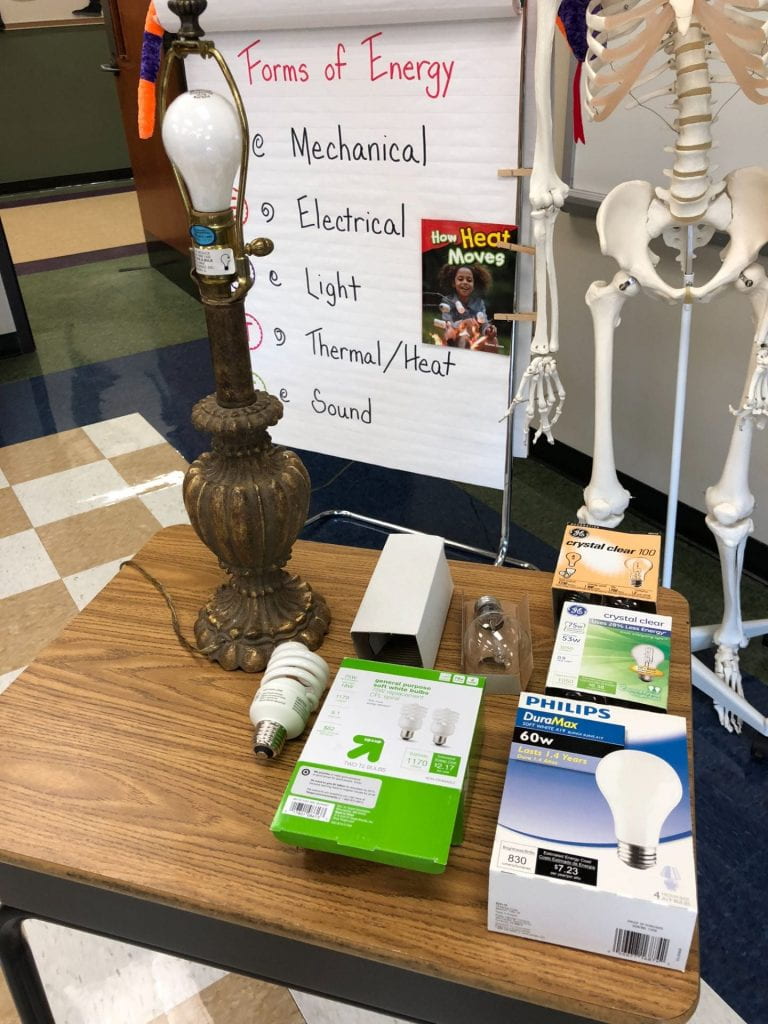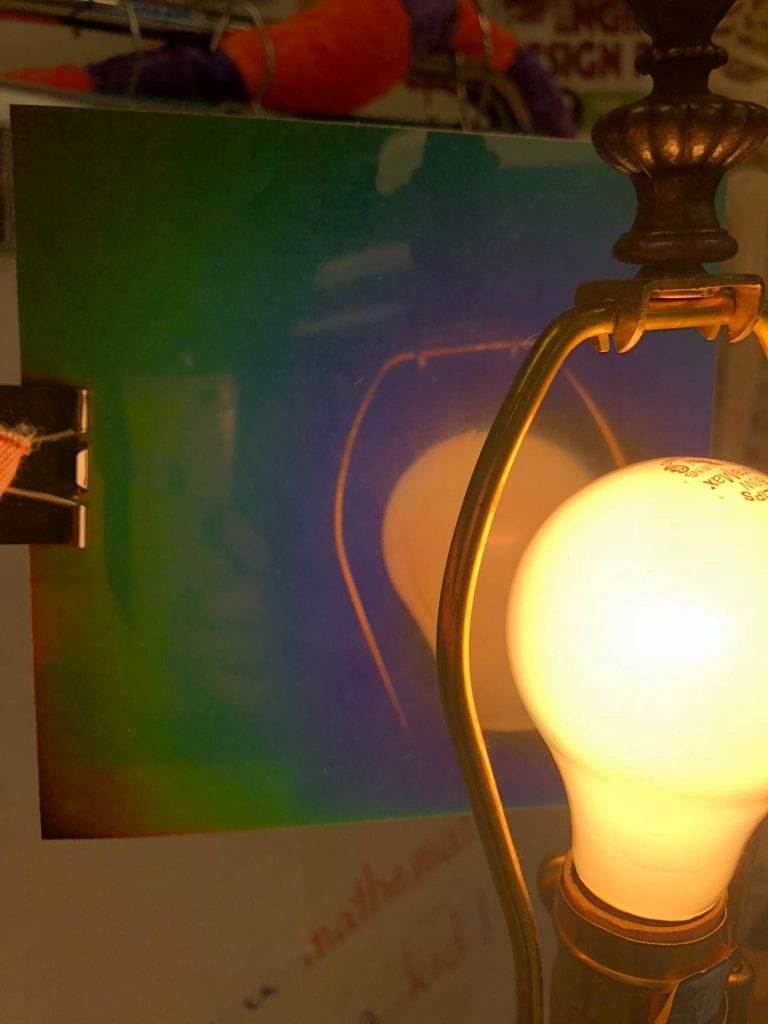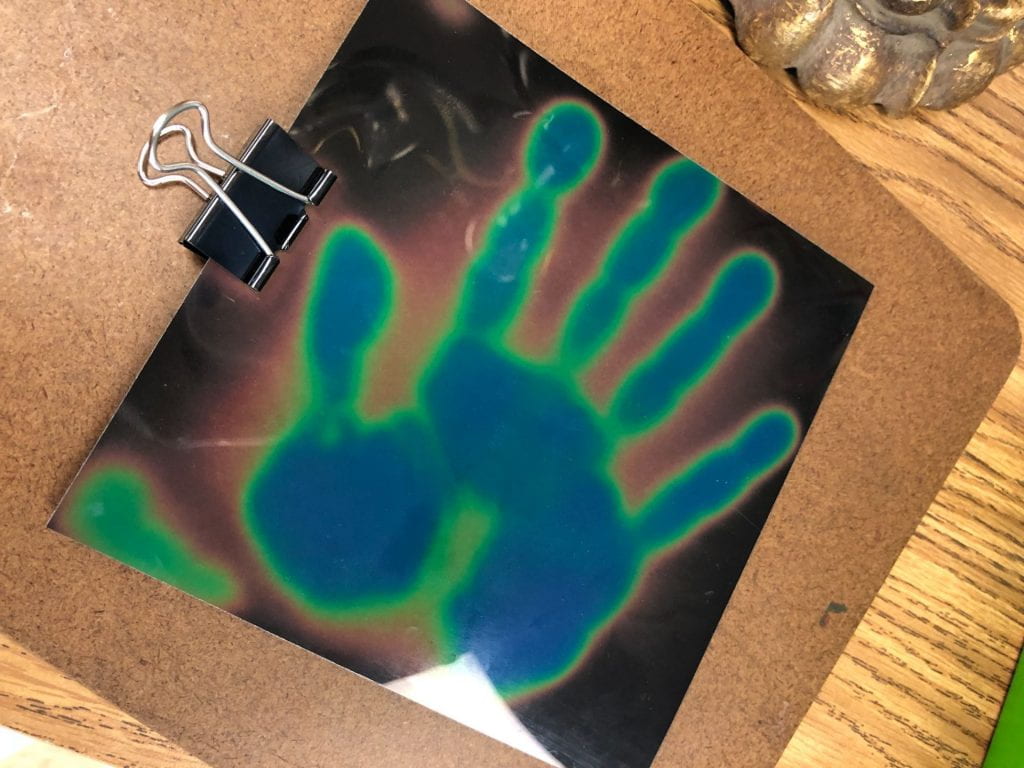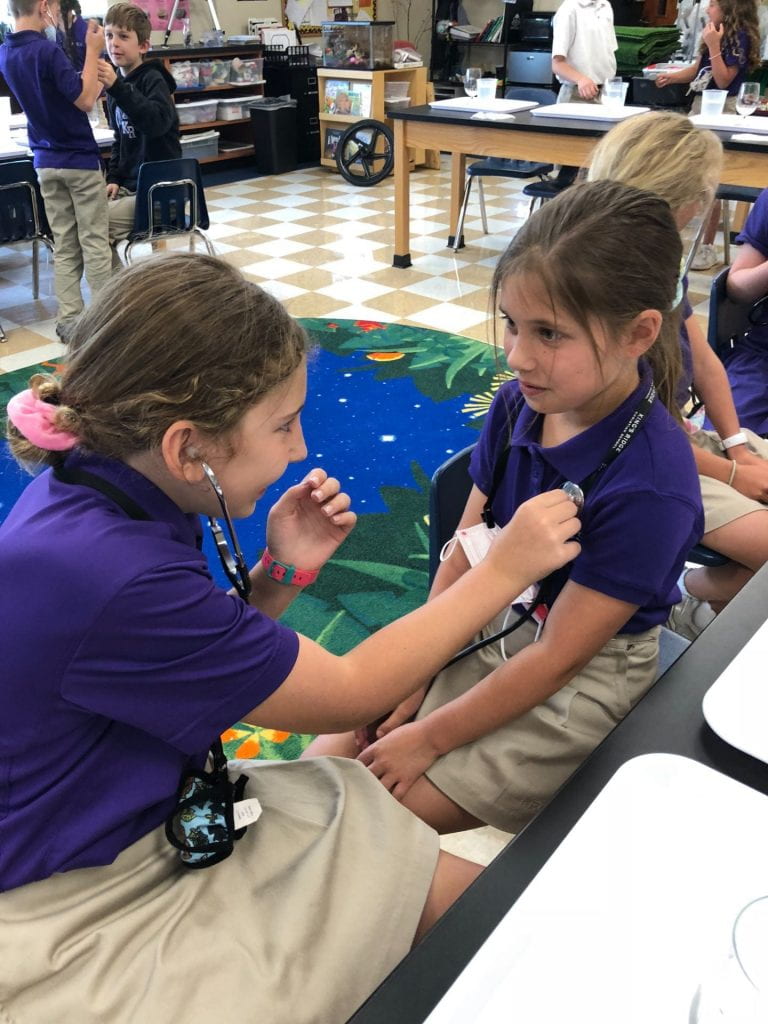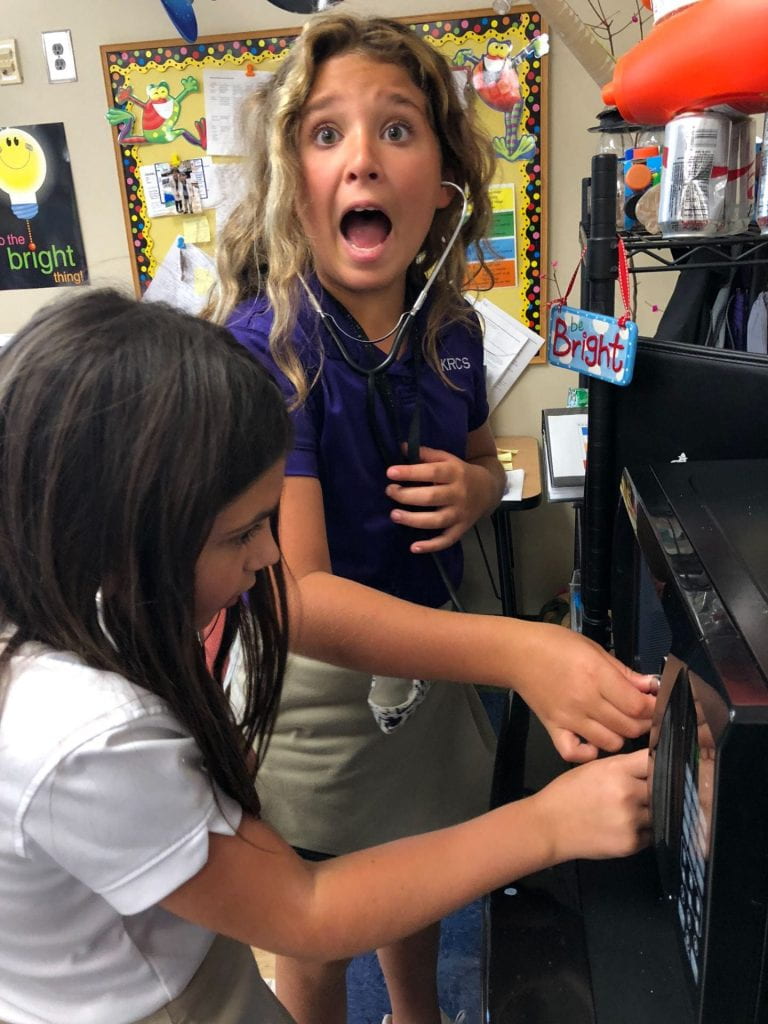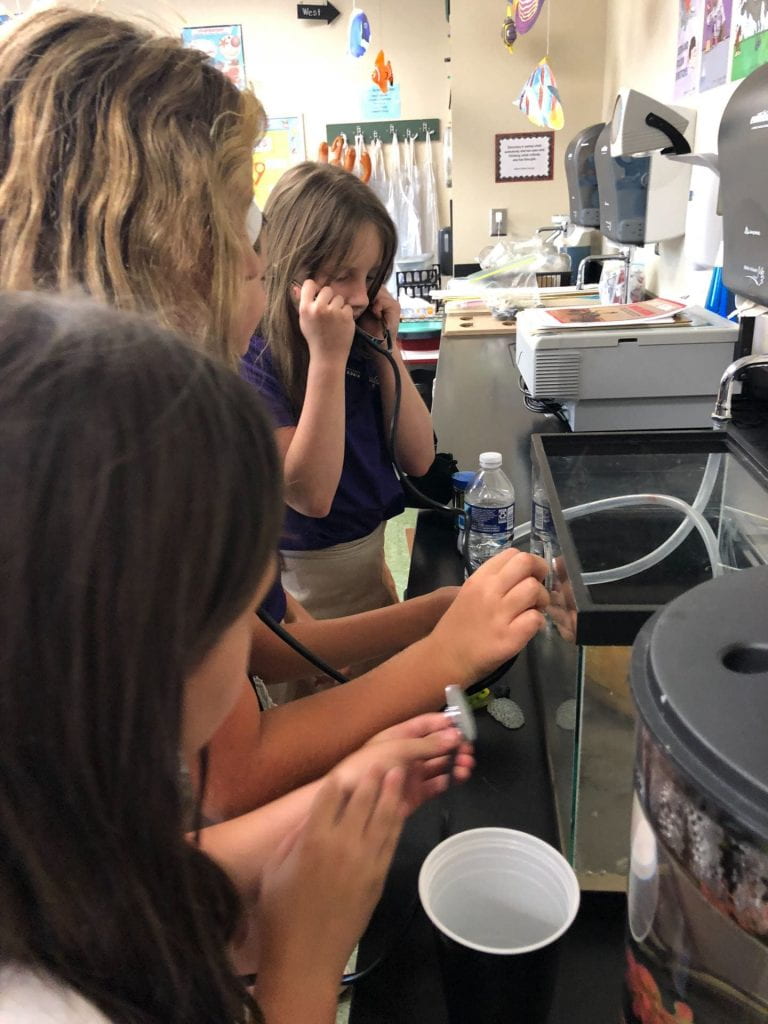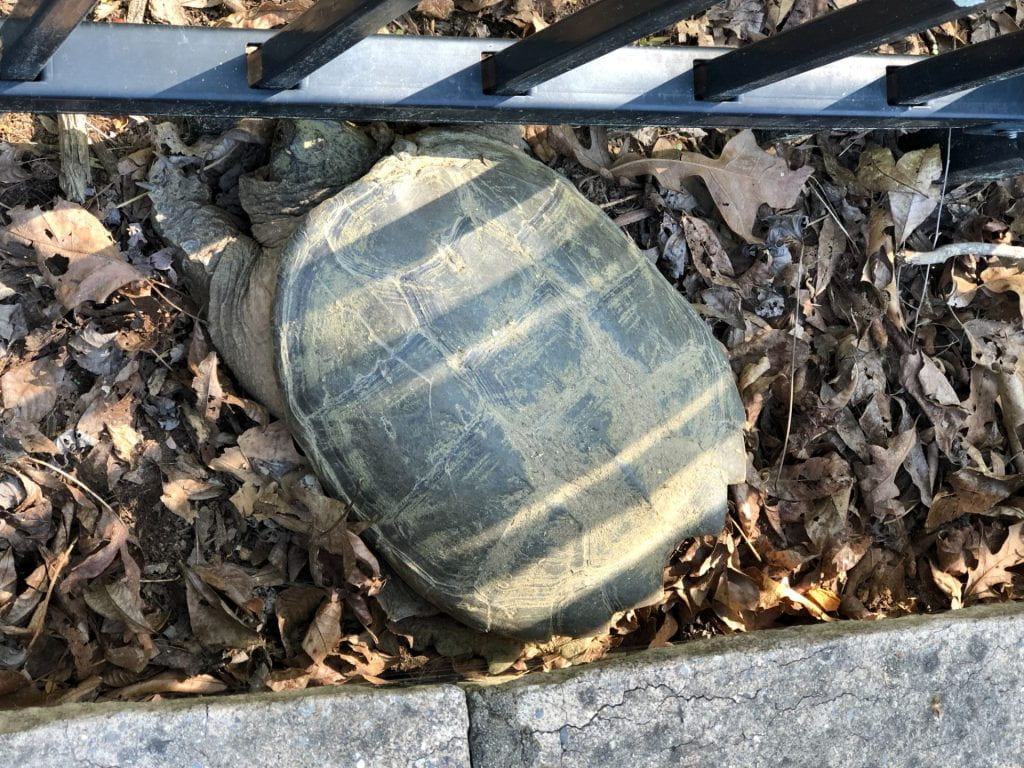Rust and Mars
After reviewing the Scientific Method, PreFirst scientists applied the process to investigate rust. Click here to learn more about the Scientific Method.
First, we observed this metal can and discussed why it might have rusted. These young scientists thought it might be old or dirty.
Then, we looked at fifteen metal items and each scientist made a hypothesis to answer the question: Will the item rust? They brought the tray of objects back to their classroom to observe. Try this investigation at home with items you collect around your house. Ask all family members to make hypotheses.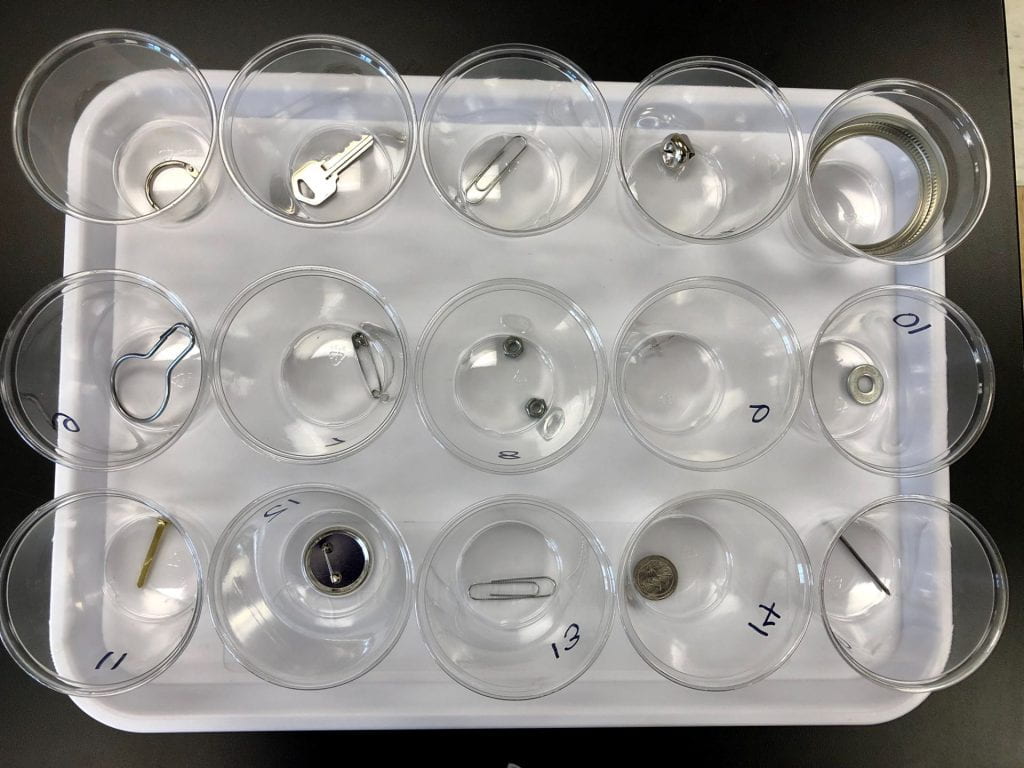
Why is Mars called the red planet? Click here to learn why. If we place steel wool in water, will it rust and look like the surface on Mars? Our control bag does not contain water.
Invertebrates
Second grade biologists are finishing the year with a study of invertebrates. They will investigate live specimens in the remainder of their labs. In this lab, we studied pill bugs, also known as roly-polies, potato bugs, and isopods.
Although they have the word bug in their name, pill bugs or roly-polies aren’t bugs at all. They are crustaceans, and therefore related to shrimp, crabs, and lobsters. Pill bugs are decomposers, the last stop on the food chain, and are often referred to as nature’s recyclers. Although they are terrestrial, they breathe through gills. Other vocabulary included molt, isopod, defense mechanism, exoskeleton, and habitat.
What will the roly-poly do when it reaches the end of the stick-turn around, back up, climb under the stick, or jump off?

Click here to learn more about a pillbug’s habitat. So fun to use my doc camera, so we could observe the isopods in their home. Notice that all the isopods are not the same color.
STEM challenge: Build a maze for your isopods.
We took a quiz to assess what we knew about pillbugs before lab and what we’d learned by the end of lab.
We also observed our millipedes-Jilly and Billy. While millipedes are fairly safe to handle, centipedes are not. We learned the difference between the two. Click here to learn more.
Volcanoes
Kindergarten volcanologists continued their study of rocks with a lab about volcanoes and igneous rocks. We briefly learned the parts of a volcano and some of the common igneous rocks. Then we moved to the lab tables and made “volcanoes” erupt. Groups of two erupted a volcano and we all watched as each exploded. The mixture of baking soda and vinegar in the volcano vent created carbon dioxide gas which caused a pressure increase in the model volcano. The rapid increase in volume and pressure forced the mixture out of the top of the model volcano just like a real volcano. We changed a variable, such as no soap, on several and noted the change in our results. I wish you could hear their reactions! Click here to learn more about volcanoes.
Amazing Orb Web
The First Toad!
Solar Ovens
Third grade environmentalists used solar power, an alternative energy source that is clean and renewable, to cook s’mores. The heat is transferred using radiation waves from the sun. We viewed several different design option for solar ovens and identified the common features. Click here to learn more about constructing solar ovens.
One of the assignments in the Upper School’s environmental studies class is to design a solar oven that can boil water, so this was a fun introductory investigation. Click here to watch college freshmen design solar ovens.
As we walked back to the lab, we placed our hand on a white car and then a black car in the parking lot. Heat passed through conduction, and we were amazed at how much hotter the black car felt. Dark colors absorb more light energy.
Back in the lab, I also shared some other items that are powered by solar energy. Look how fast the animals on the back table are moving. They are in the sunlight.
All About Frogs
With my youngest scientists, I always try to begin lab with a song or fingerplay. We sang Five Little Freckled Frogs which connects math and science.
PreK biologists observed our lab frog, Yoda, and noticed the changes in our tadpoles.
We put the stages of metamorphosis in order We realized that we should be in a circle, not a line, because this is a life cycle.
We used forceps, a science tool, to feed our frogs. We pretended the rice were small bugs which was a great activity to develop fine motor skills!
Frogs are amphibians and must keep their skin moist. They don’t just wear it; they drink and breathe through it. Frogs don’t usually swallow water like we do. Instead, they absorb most of the moisture they need through their skin, so I introduced the concept of absorbency. We moved to the lab tables and used pipettes to test whether the materials were absorbent or nonabsorbent. Notice items around your house that absorb water, such as towels or those that do not, like rainboots or umbrellas.
Sound and Light
Fourth grade physicists continued their study of sound and light. As we rubbed our fingers over the rim of the glasses, vibrations were produced inside the glass which in turn created a sound. Click here to watch a street musician. As we poured water in and out of the goblets, the pitch changed. Click here to watch the toothpick challenge.
Energy efficient bulbs emit less heat than traditional incandescent bulbs and are safer to operate and cut energy costs associated with home cooling. They also last longer and save in electricity costs over their lifetime.
We proved the efficiency of the bulbs by placing heat sensitive sheets behind them. The bulb that used more of its energy for light, didn’t release much heat onto the sheet. Look at all the colors that were displayed on the heat sensitive sheet from the less efficient bulb. Which colors represent the most heat?
After a brief lesson about the heart, we used stethoscopes to listen to a variety of sounds around us, such as our hearts, stomach, the motor on the fish tank, the lab fridge, and finger tapping. Click here to watch an informative video about the heart.

